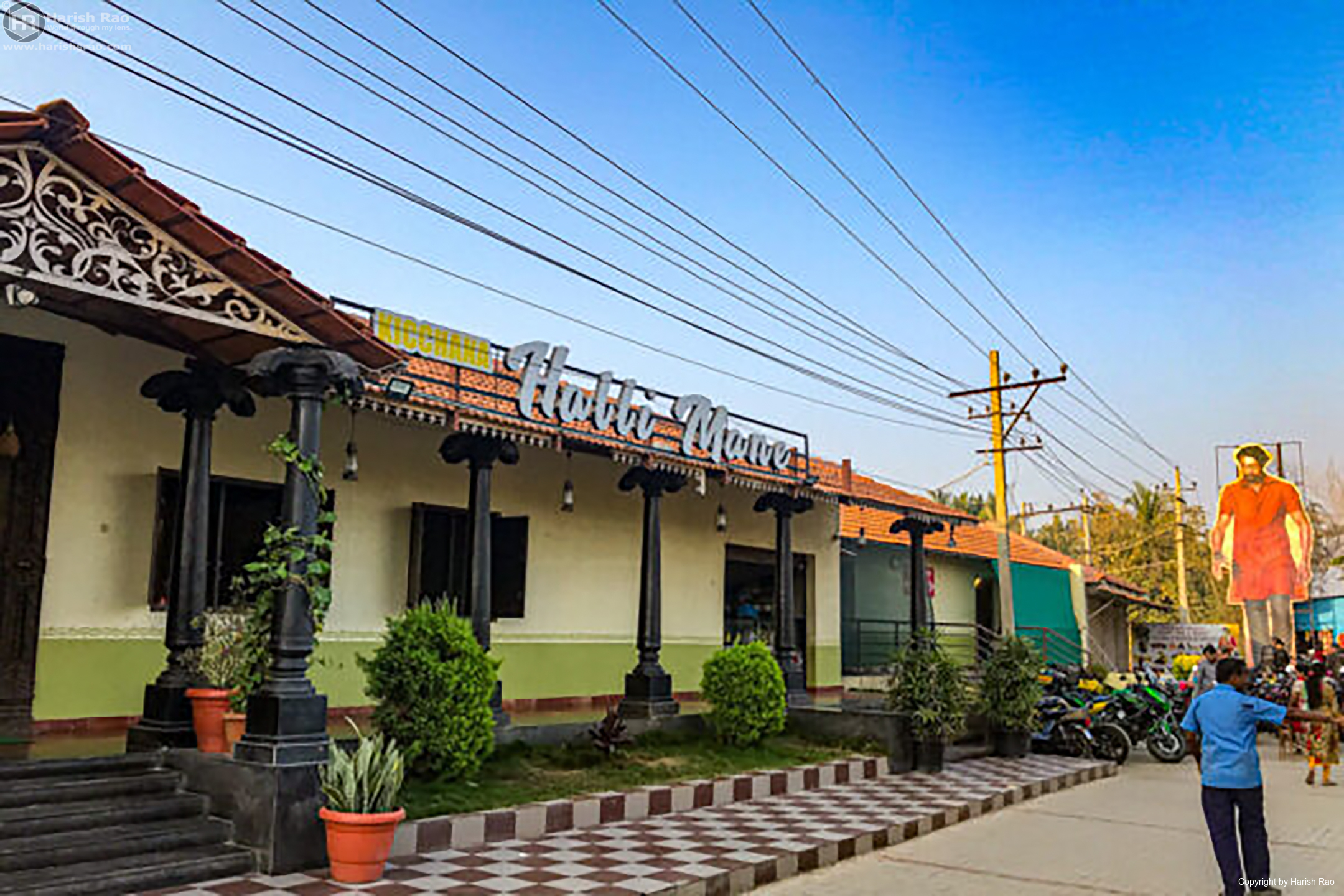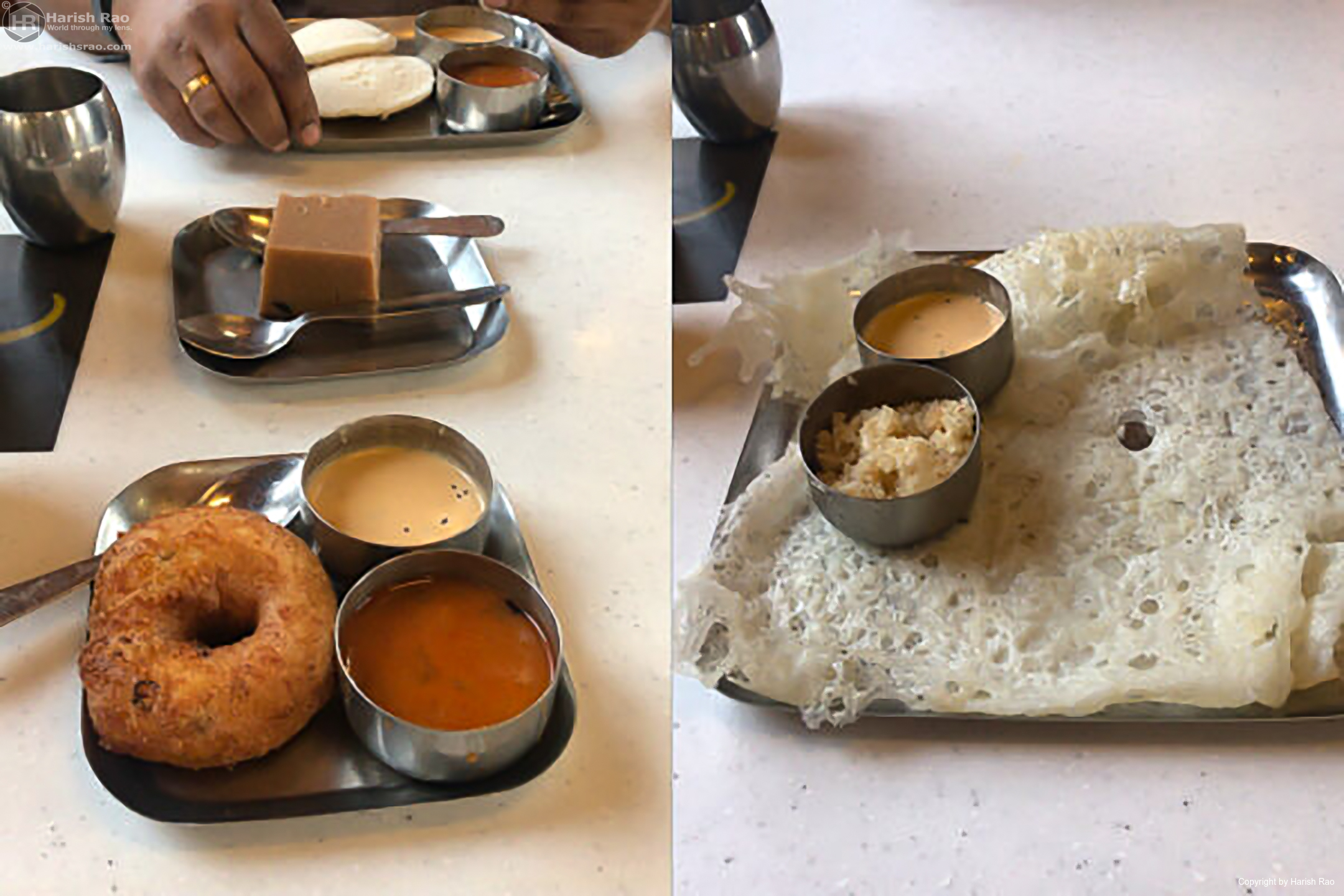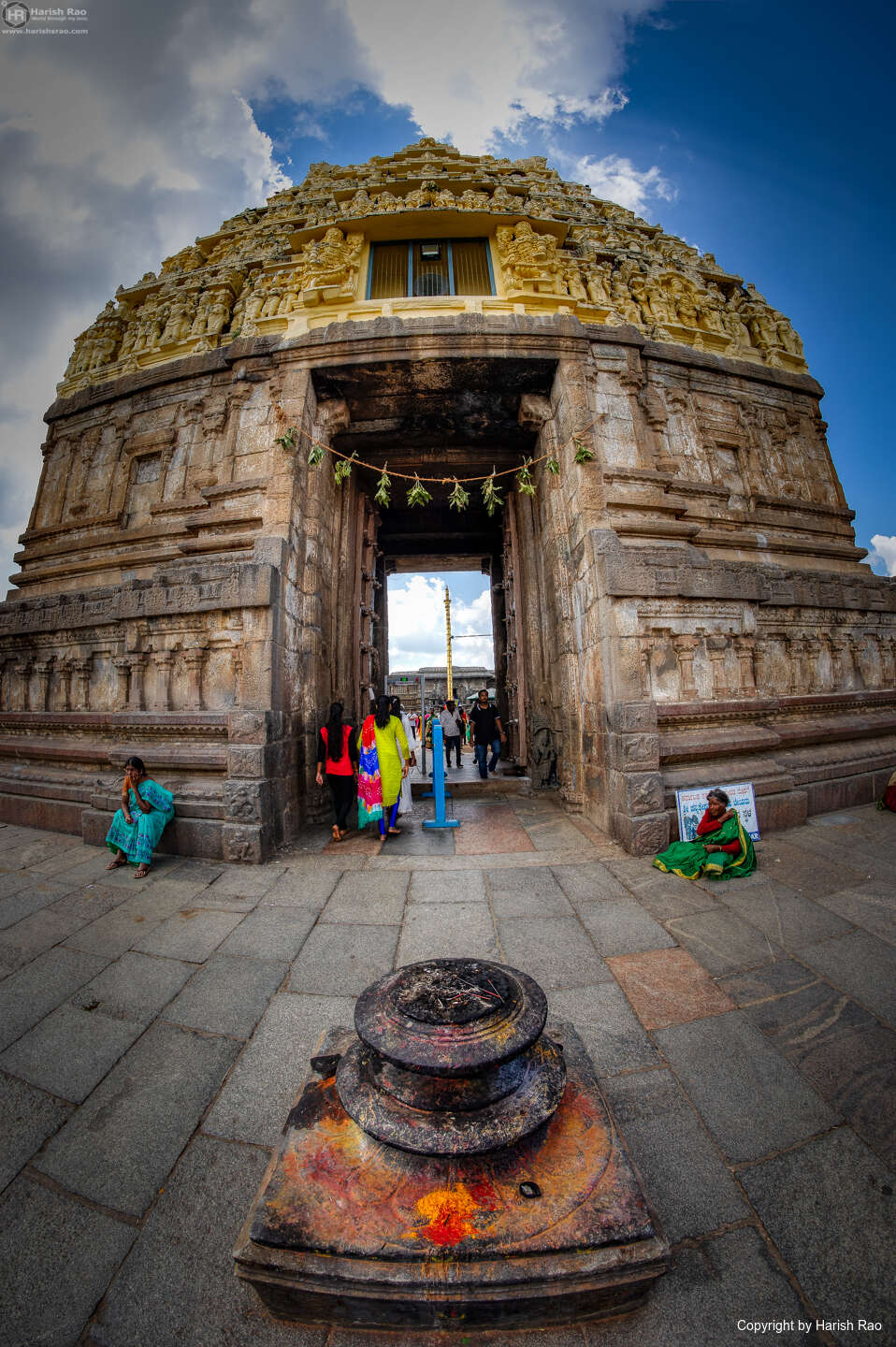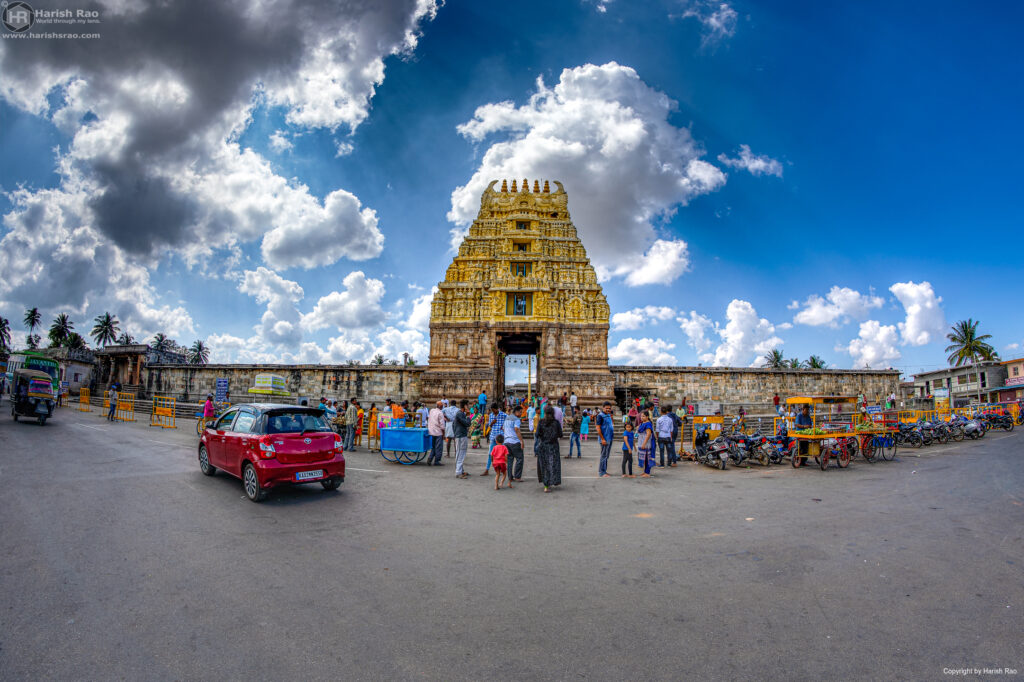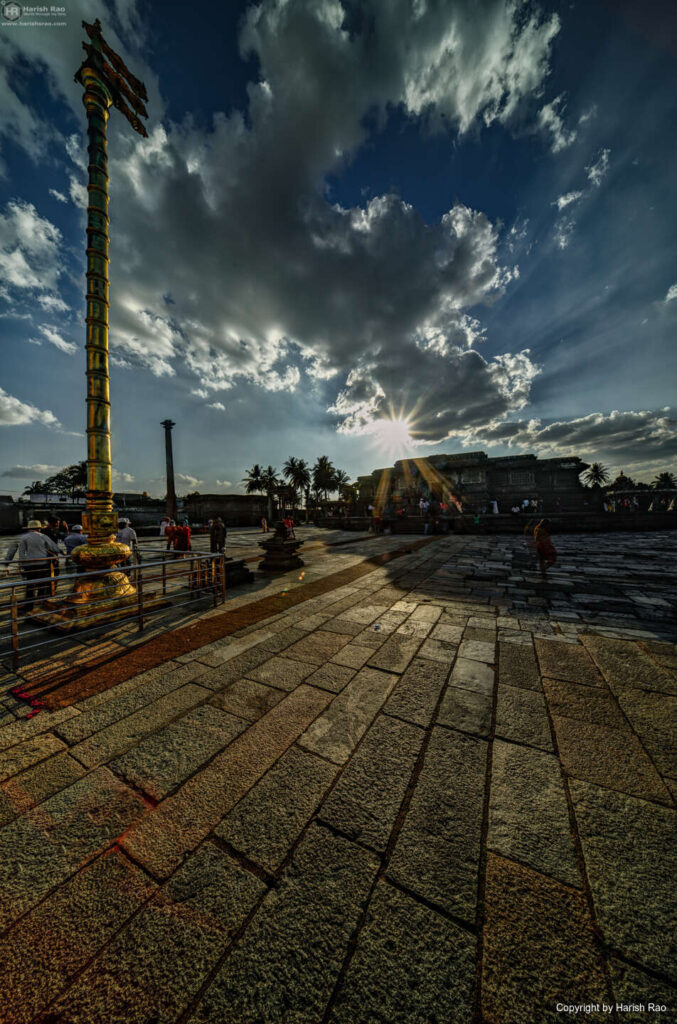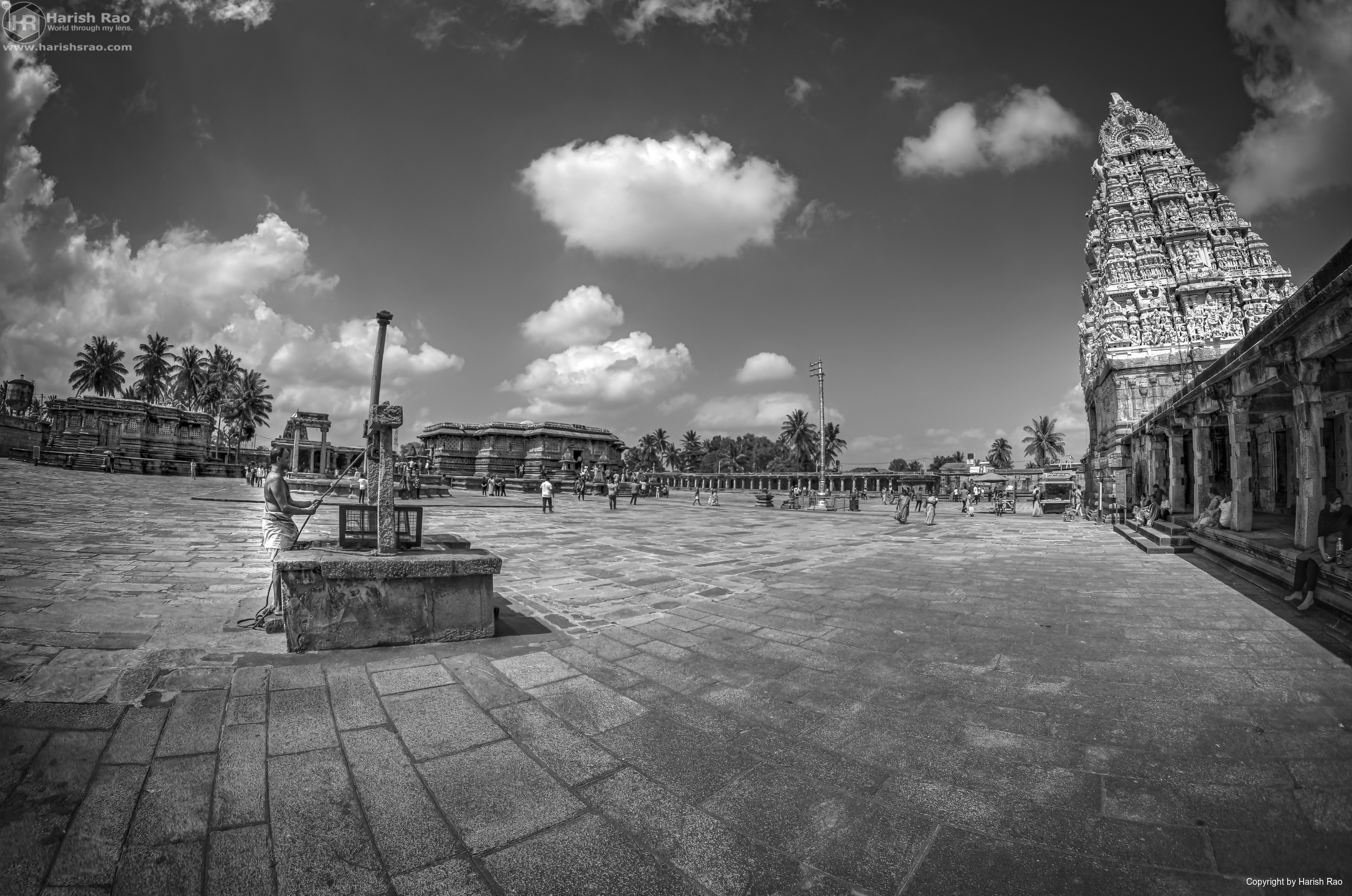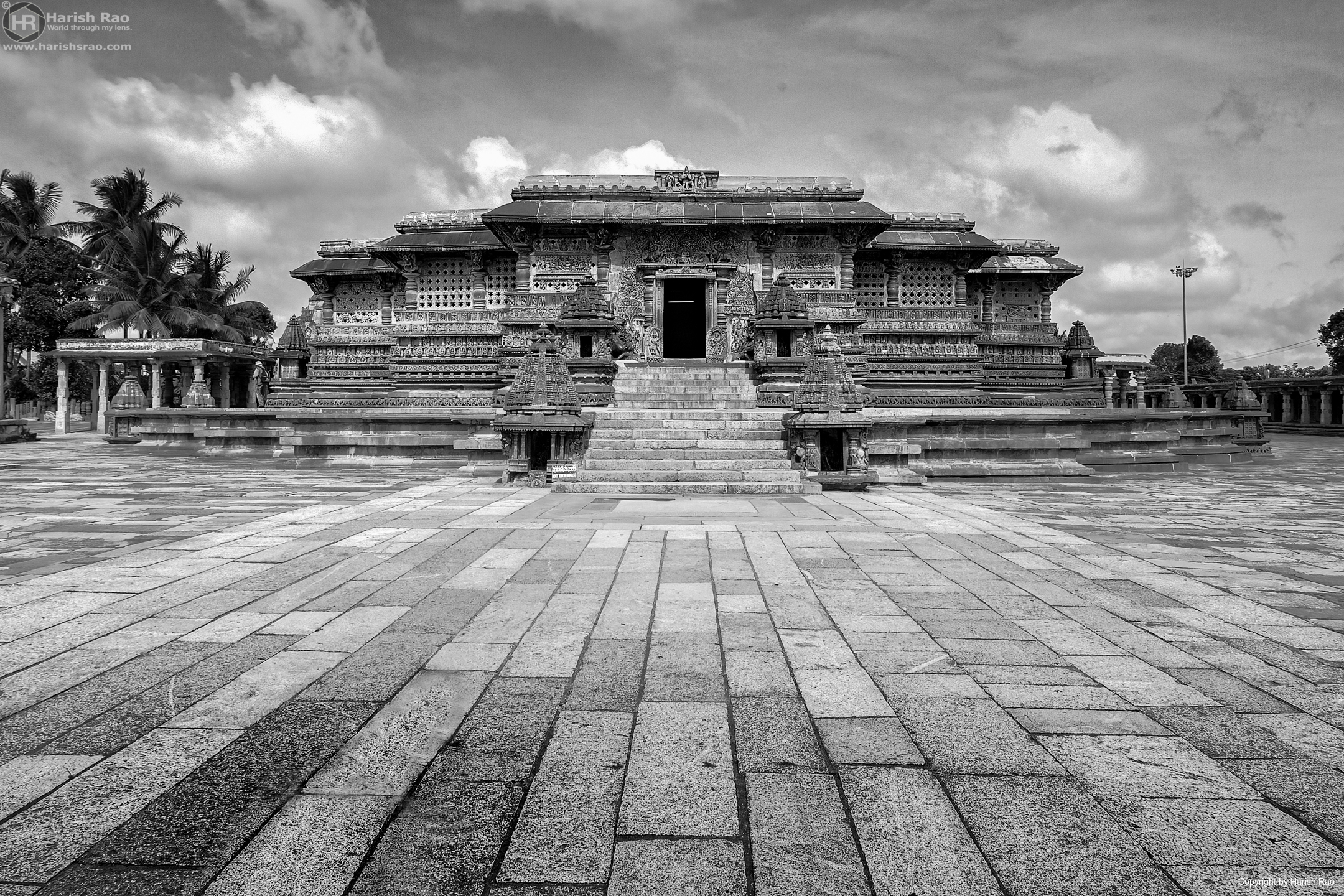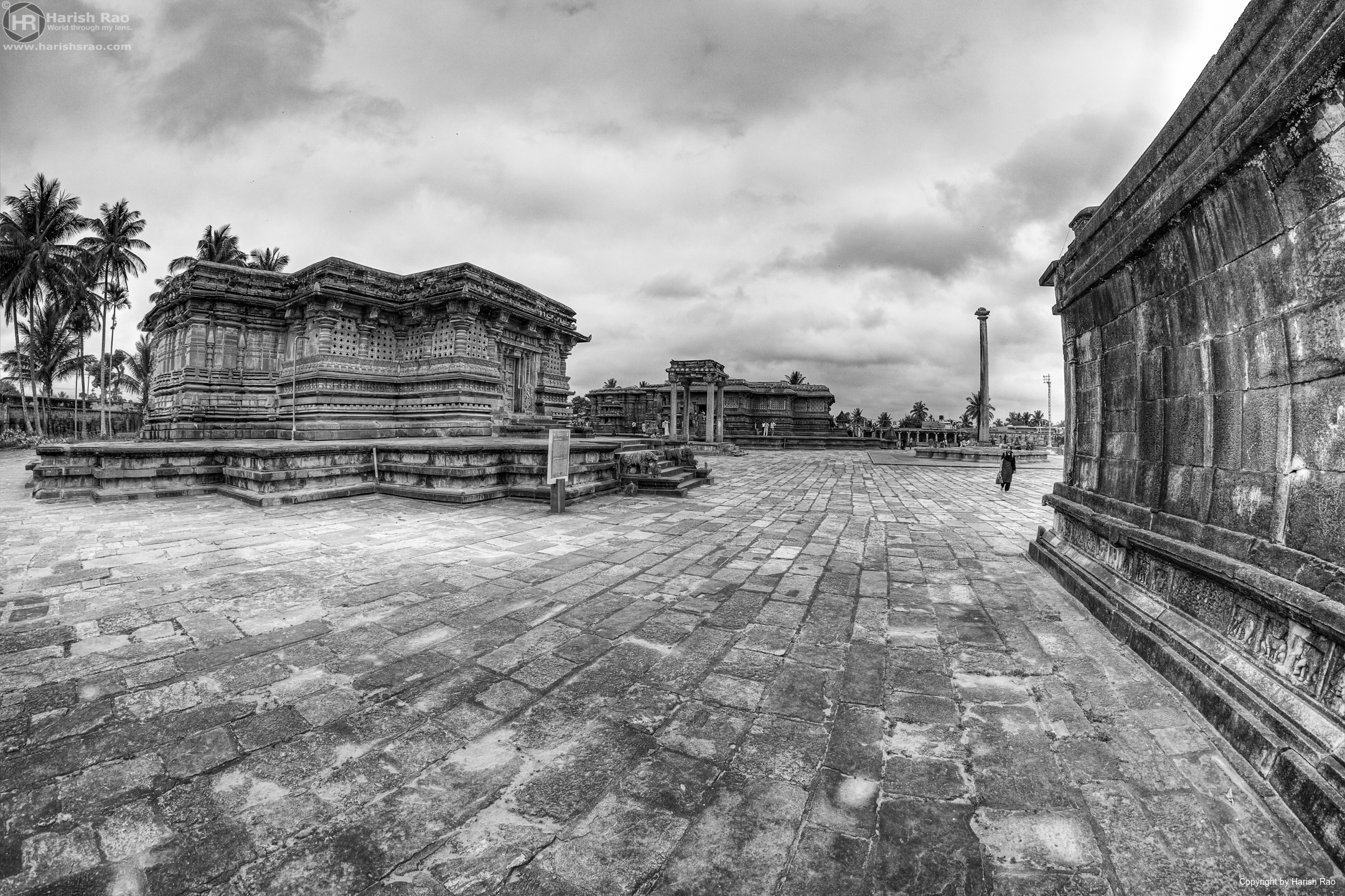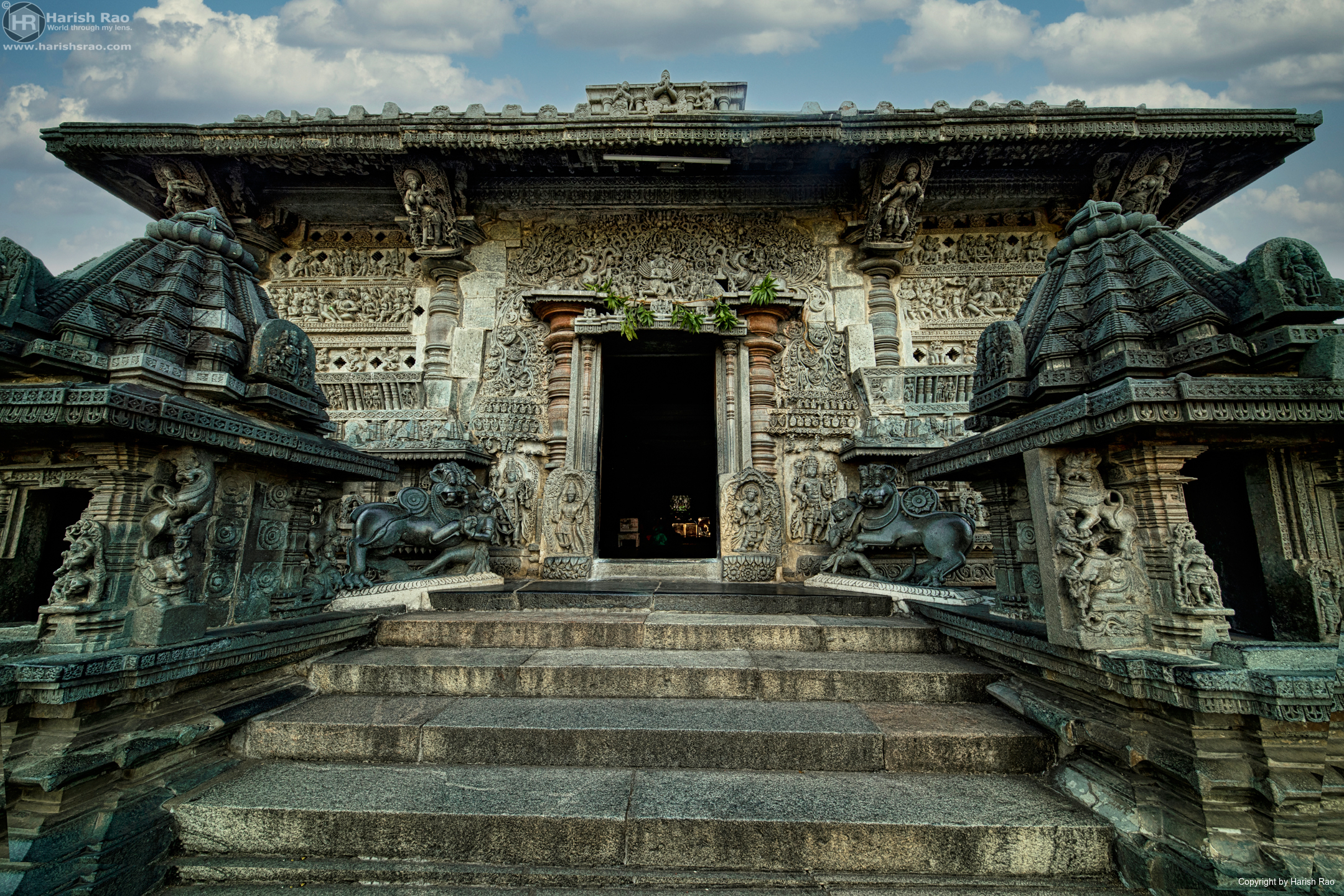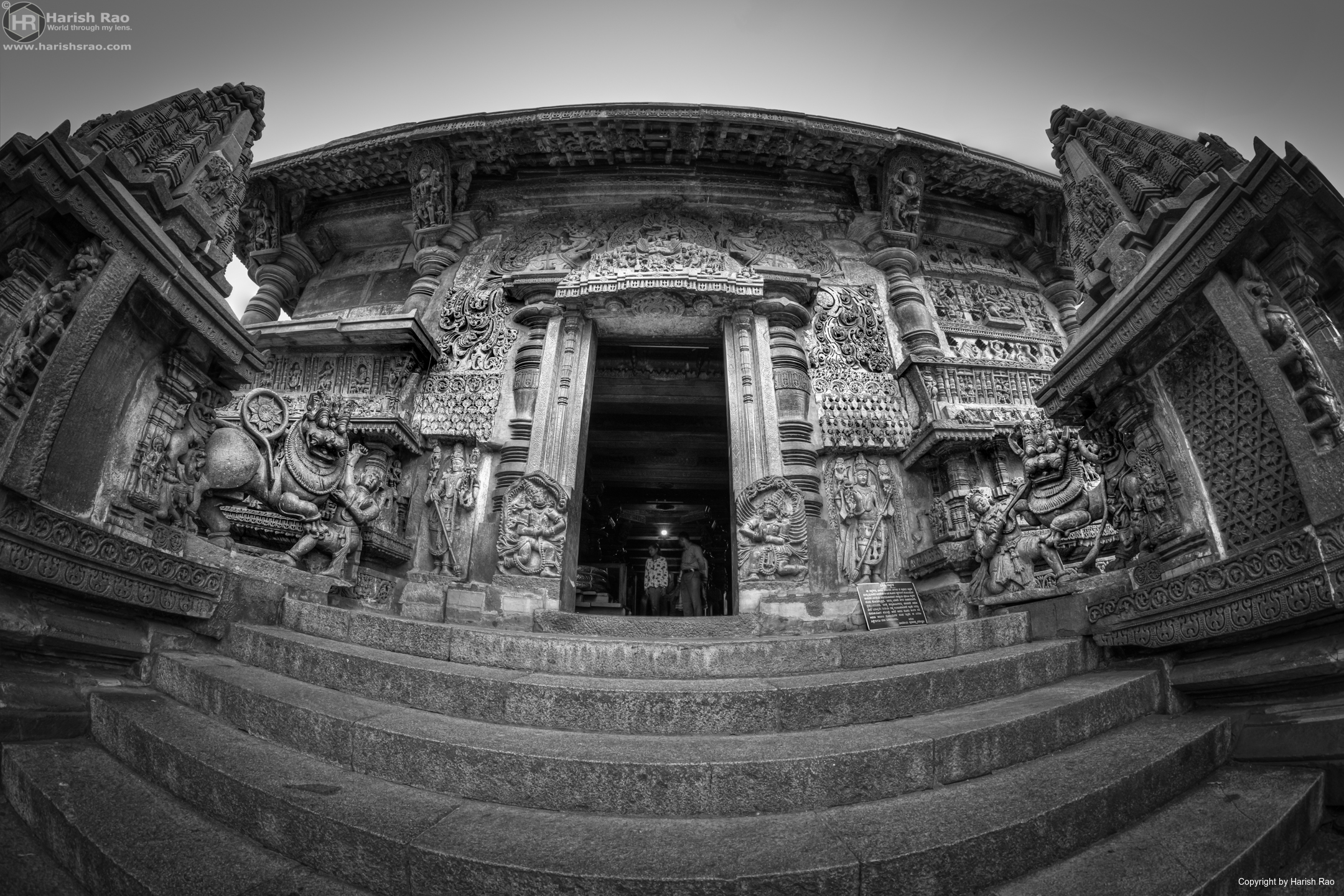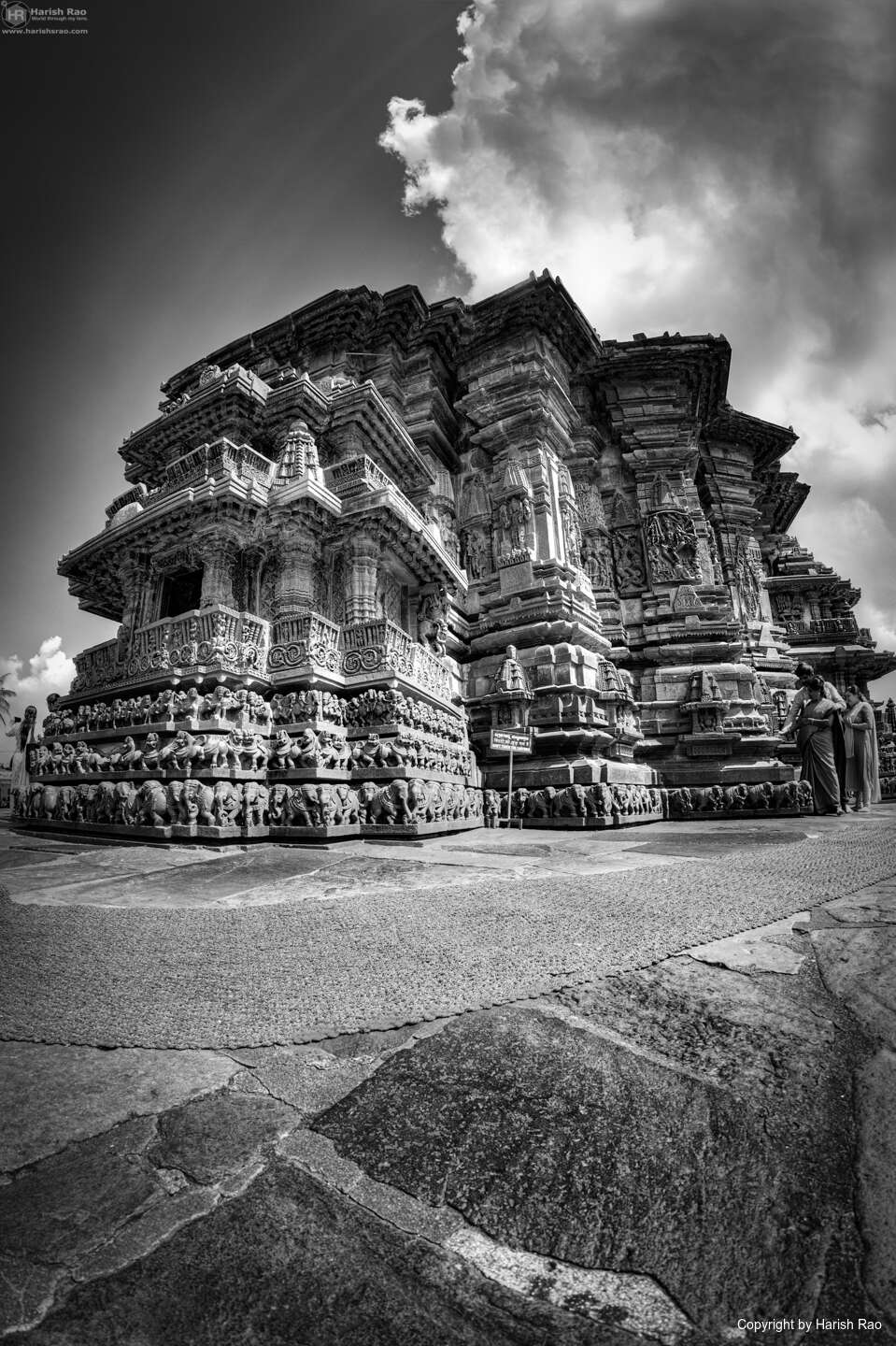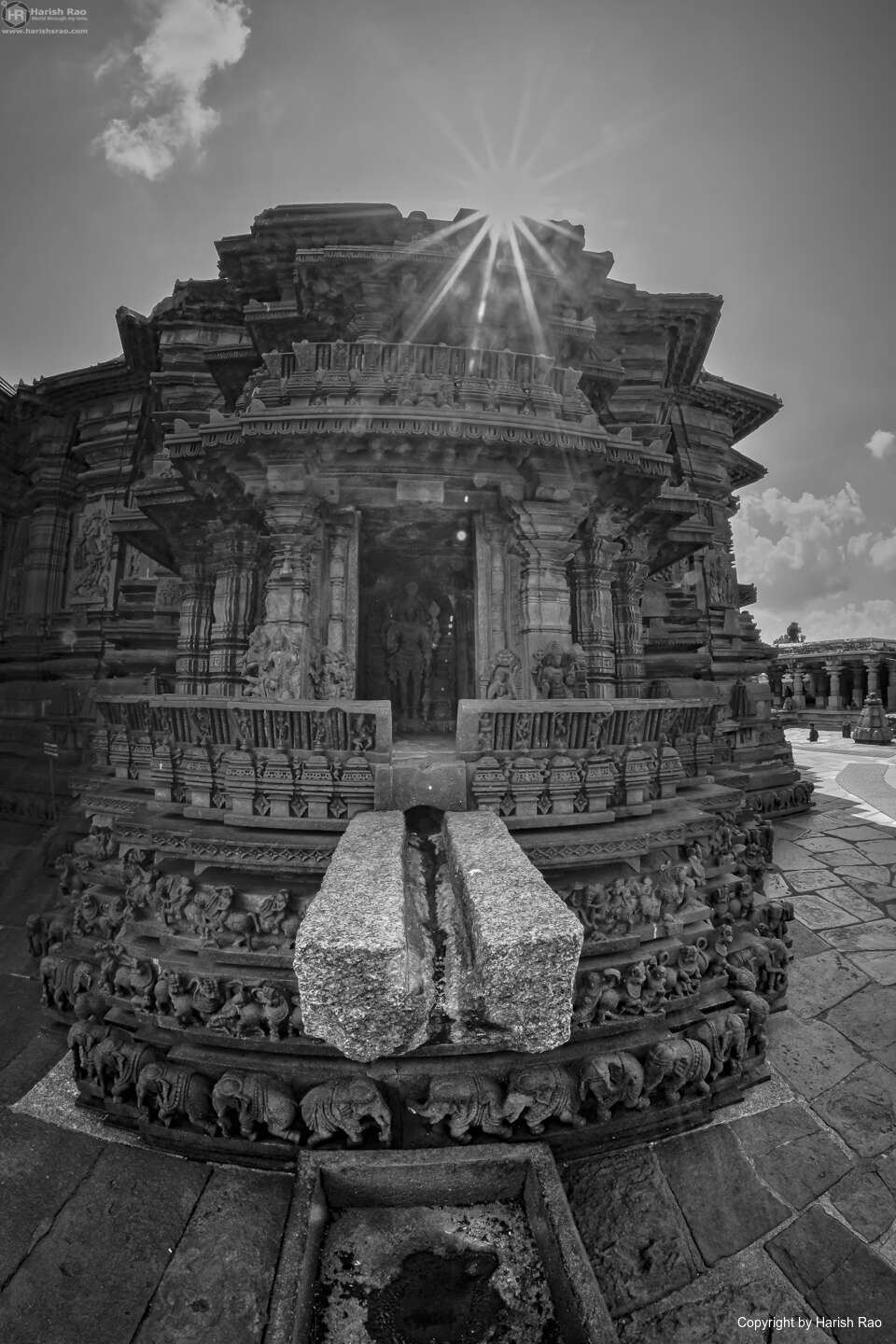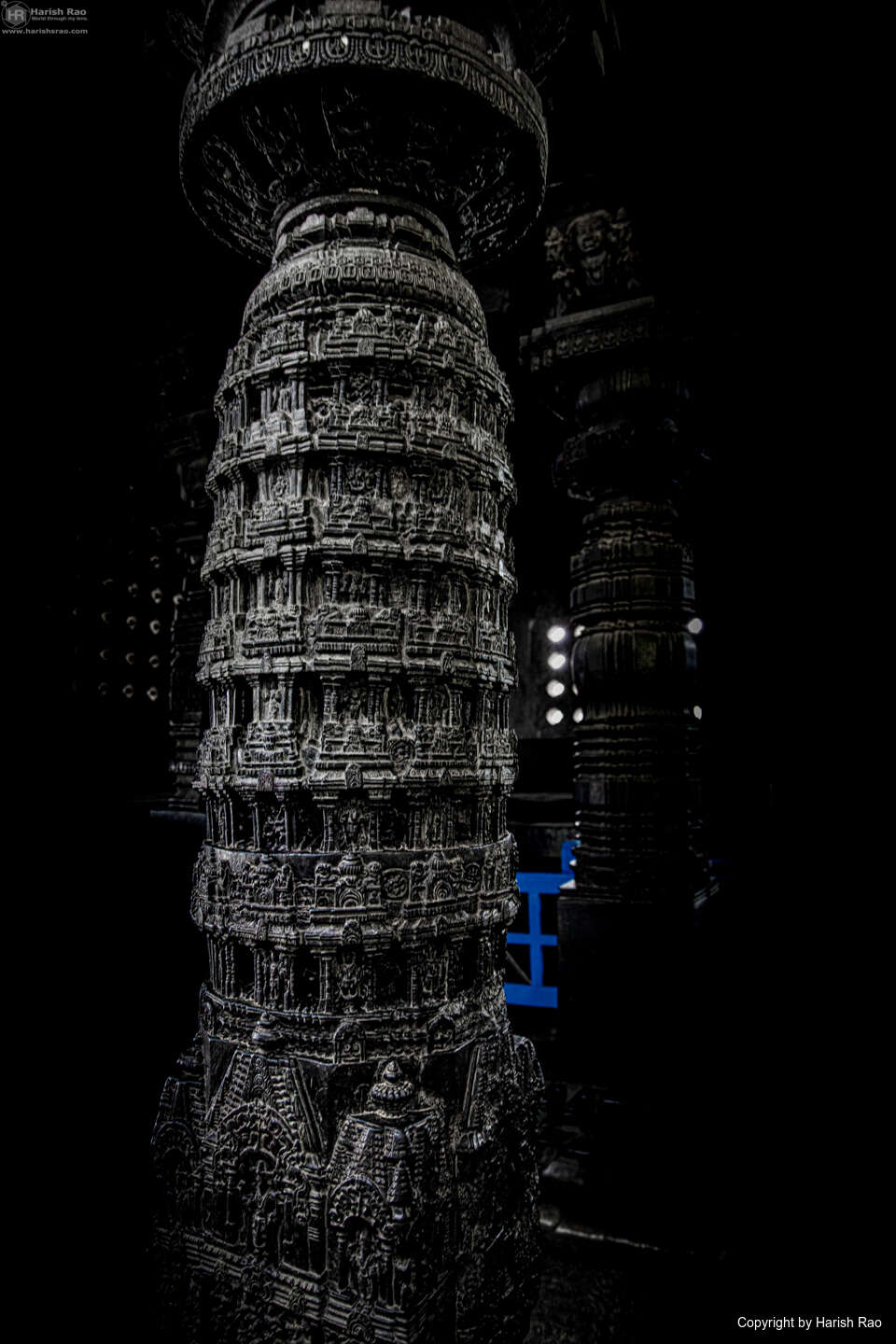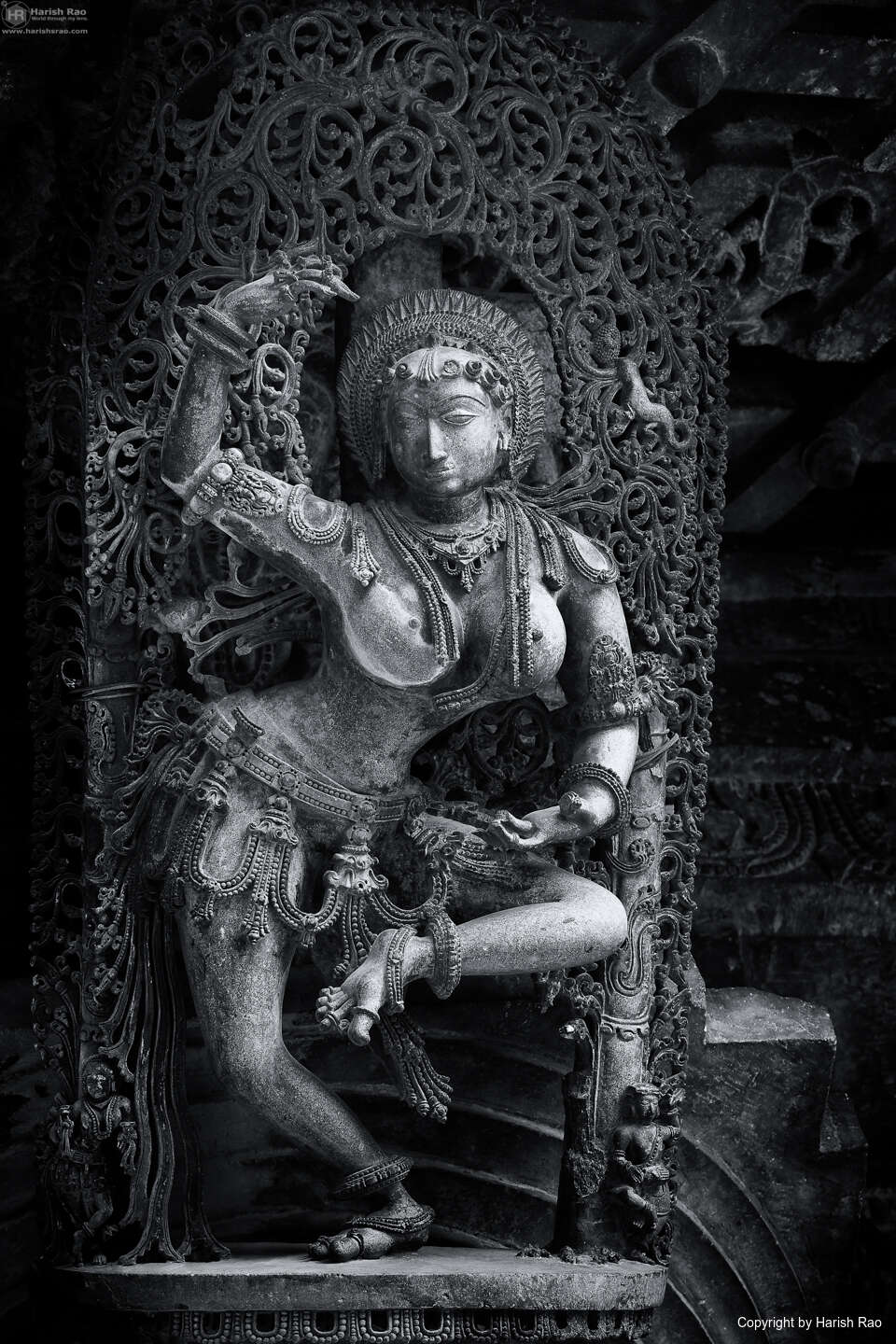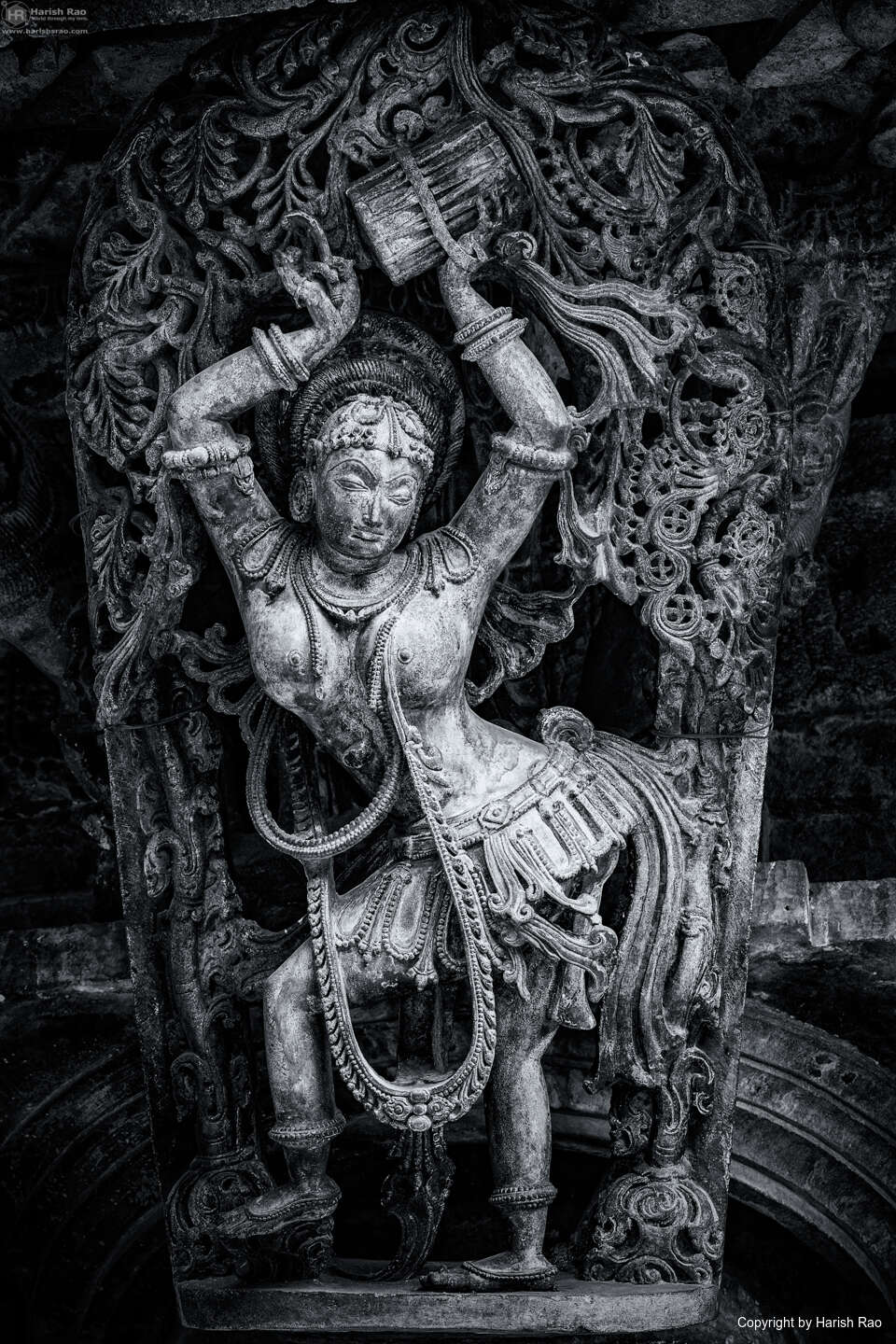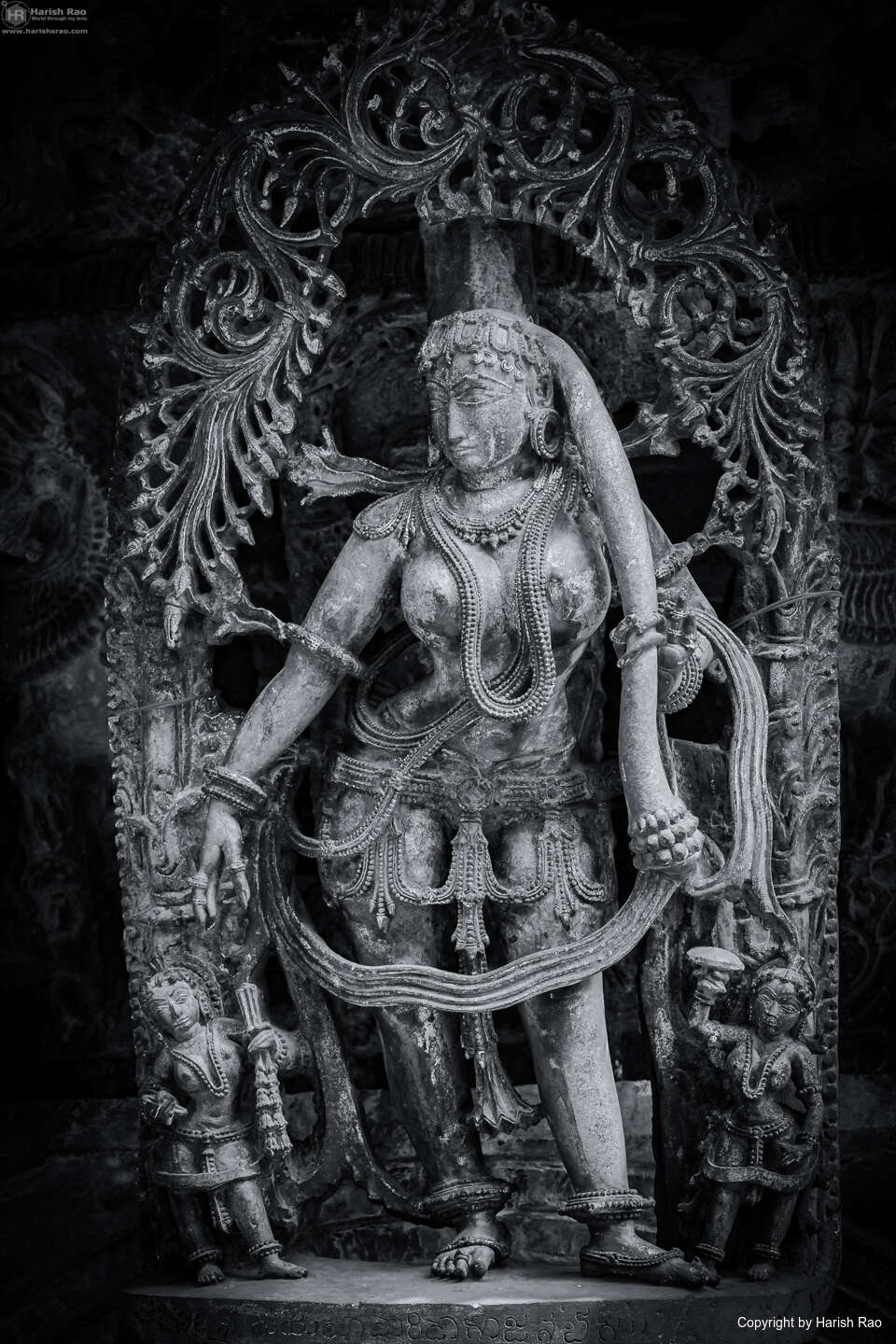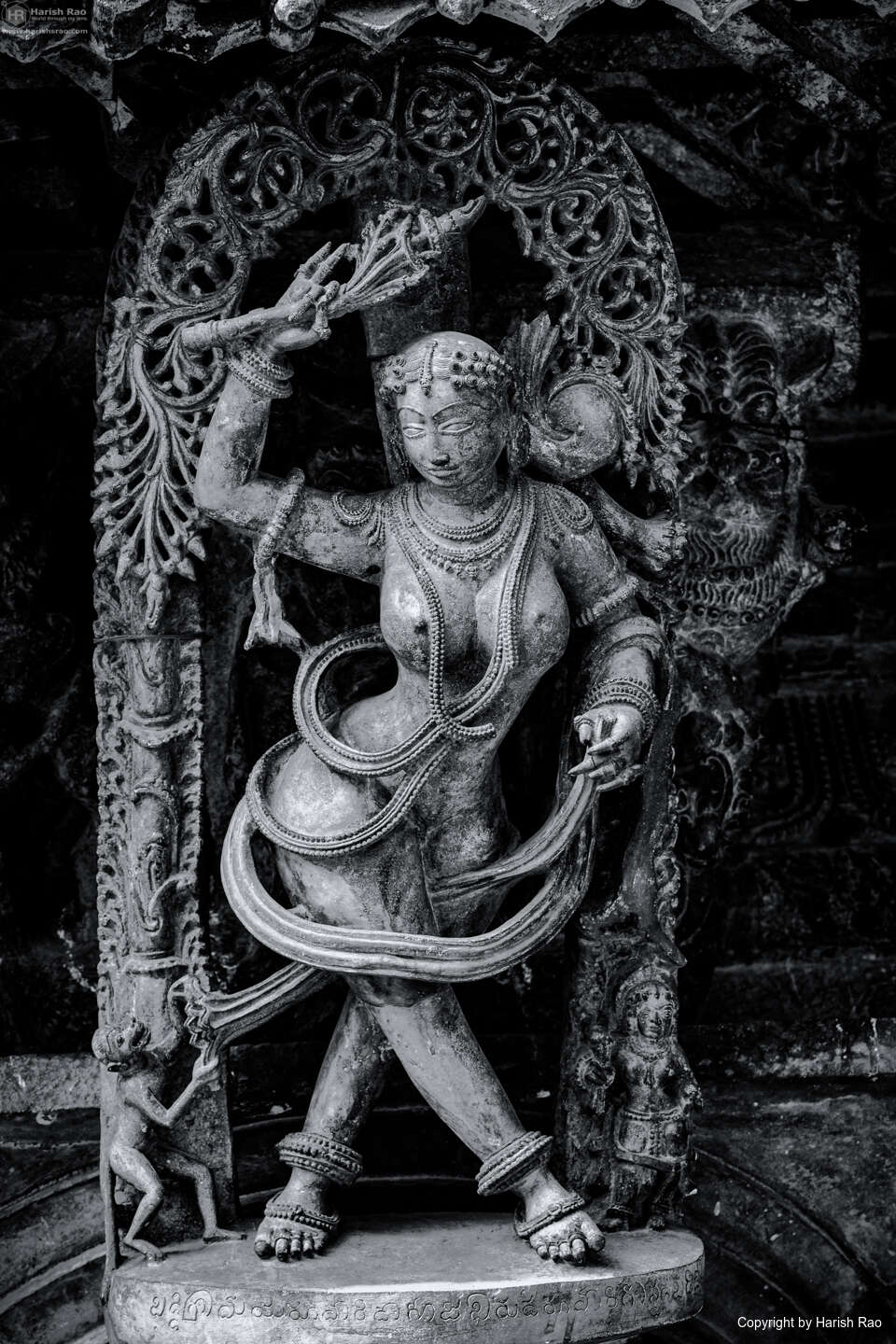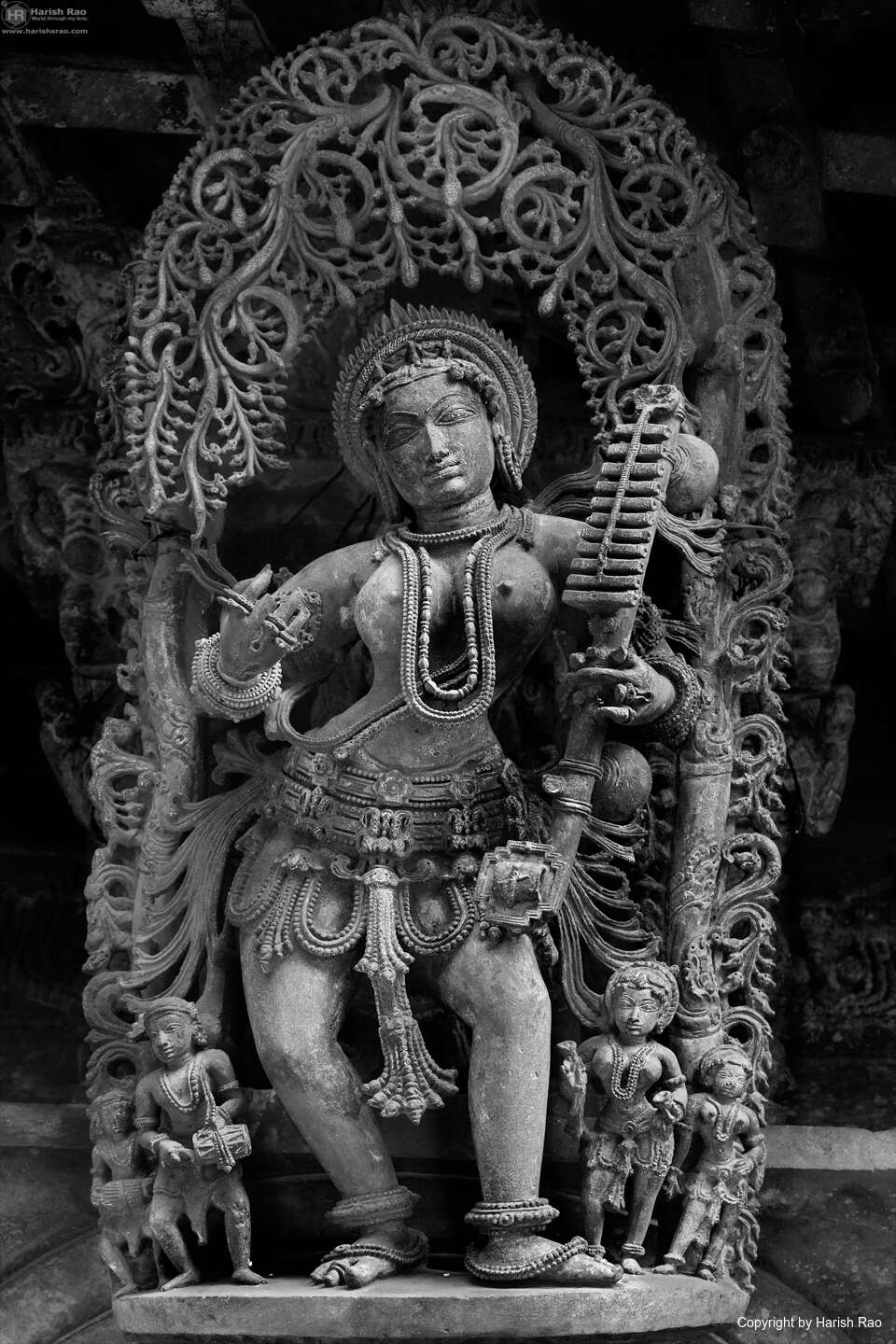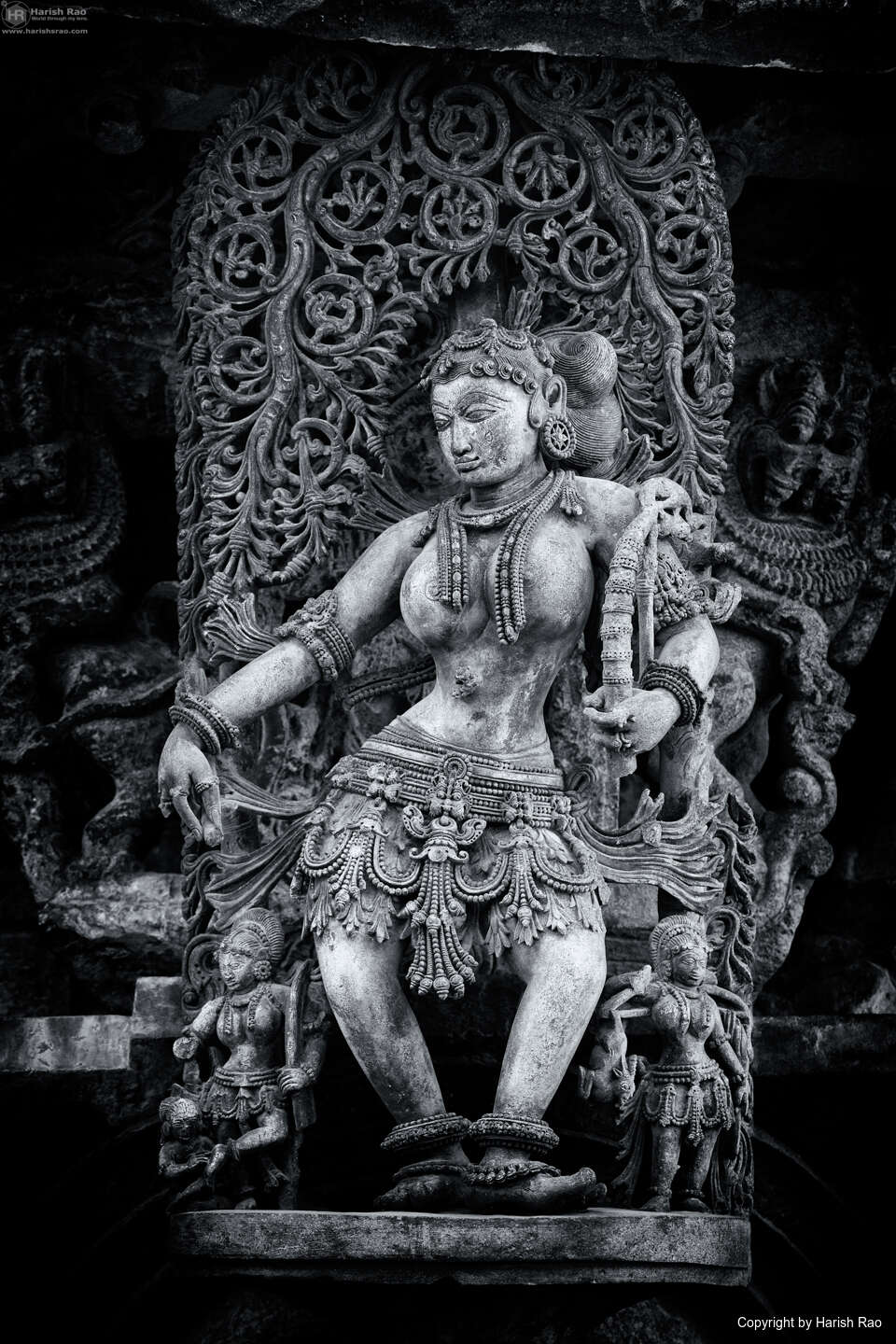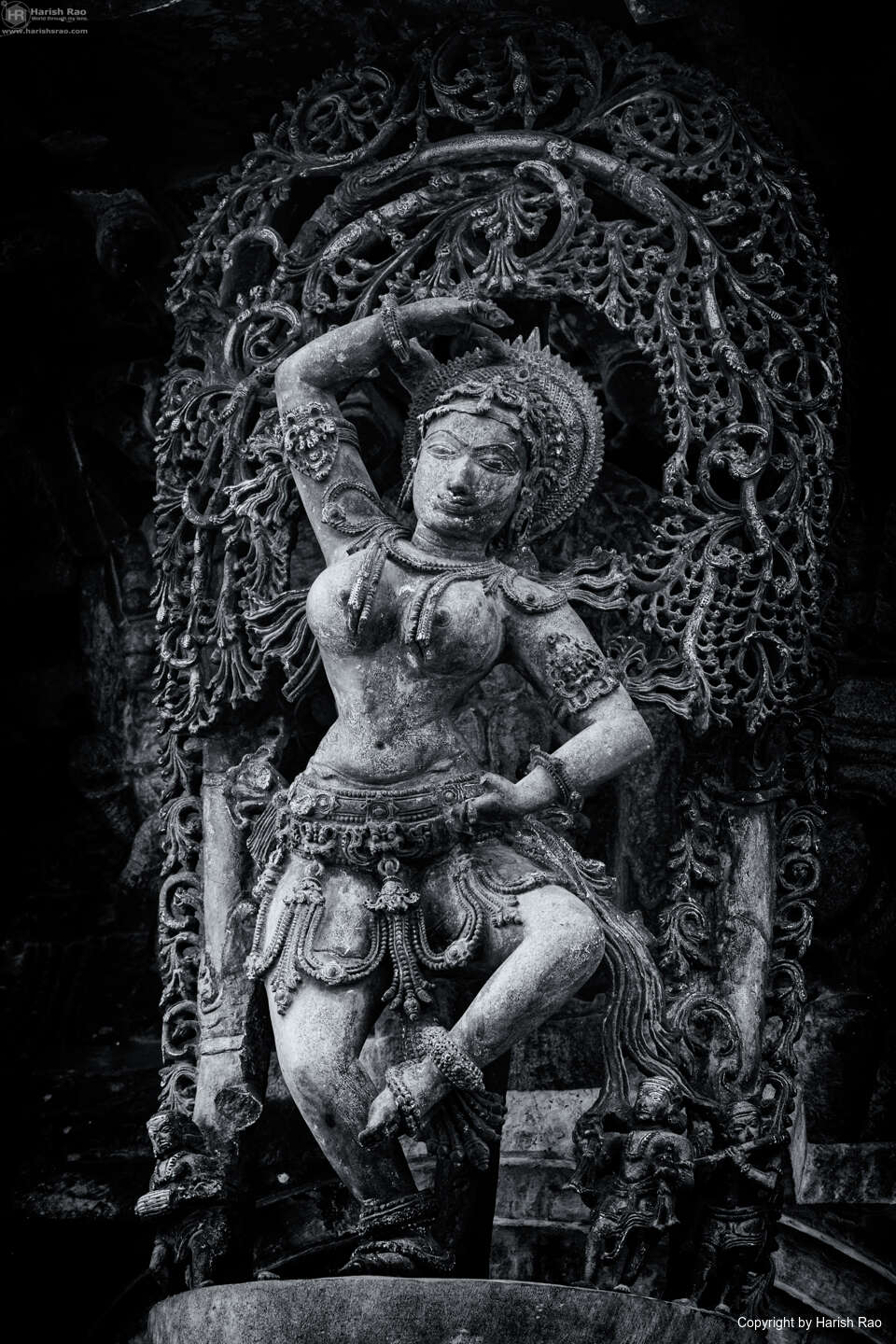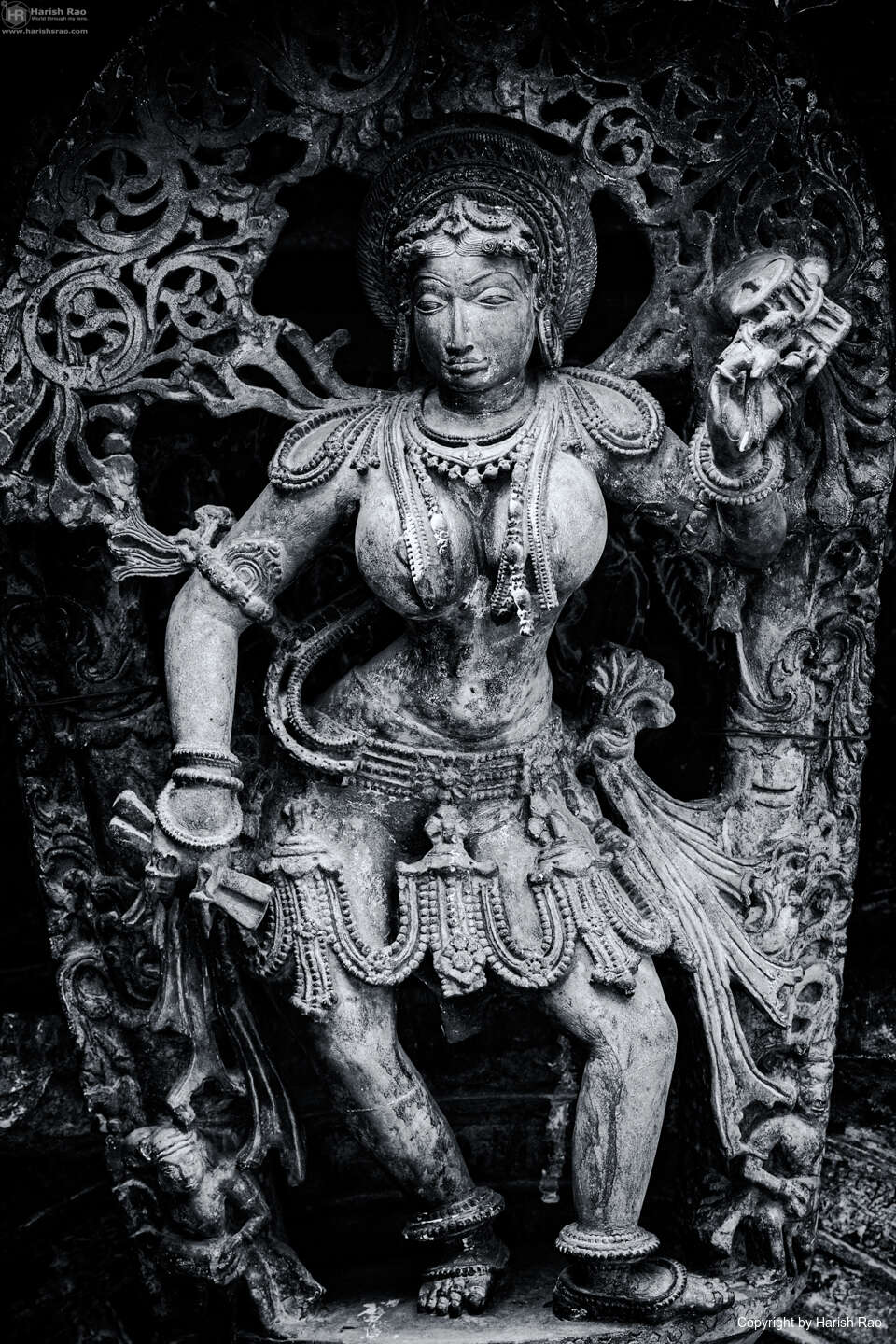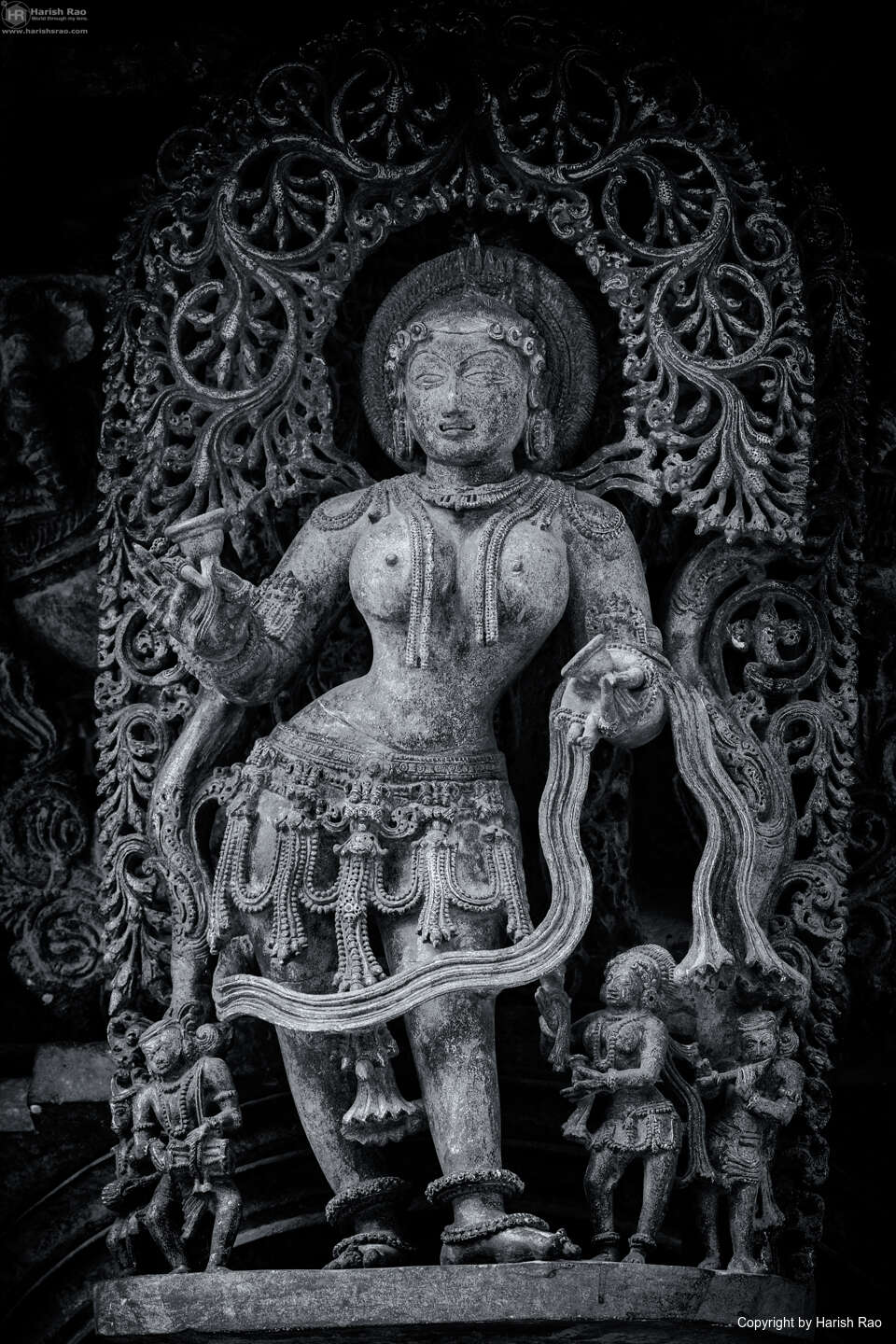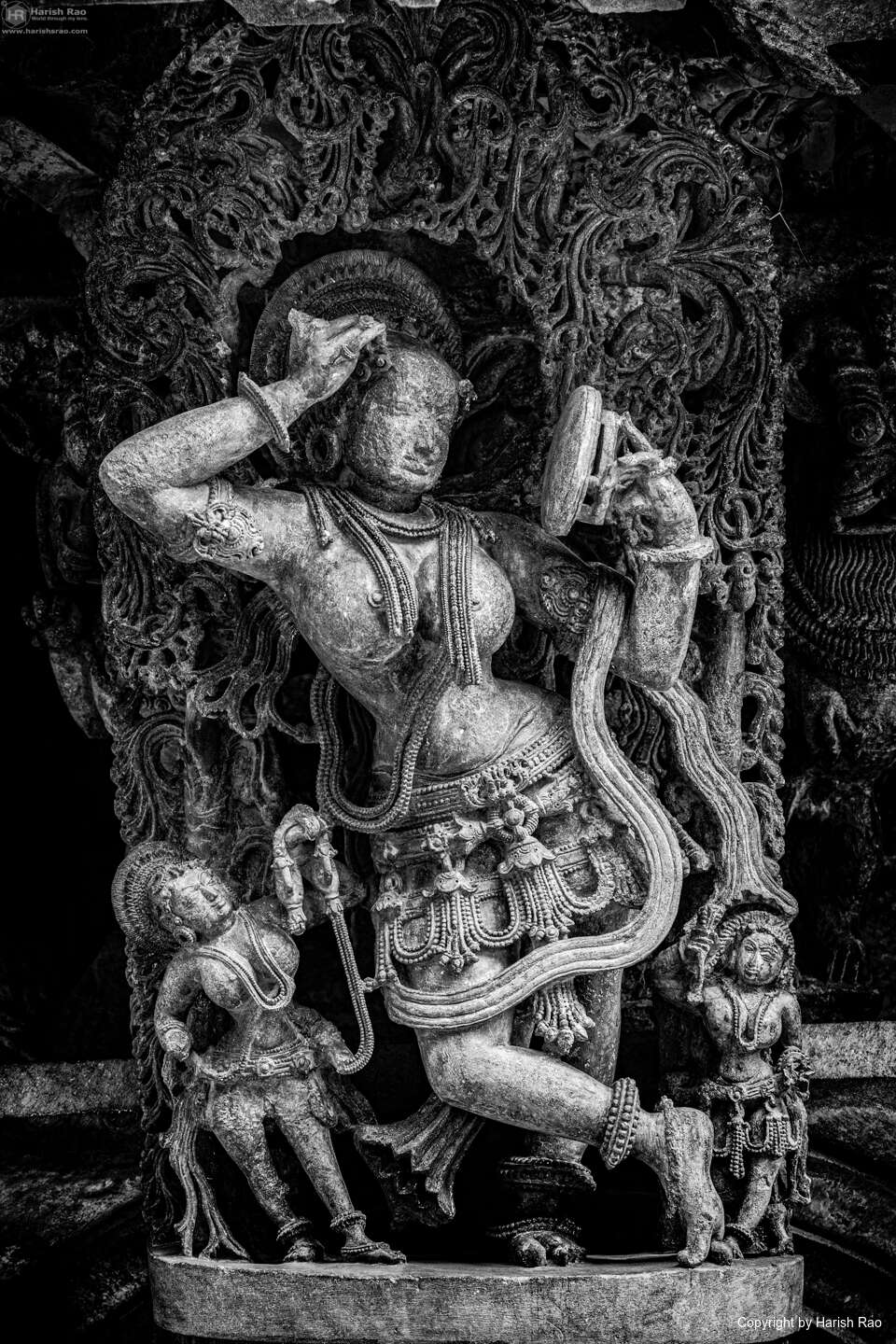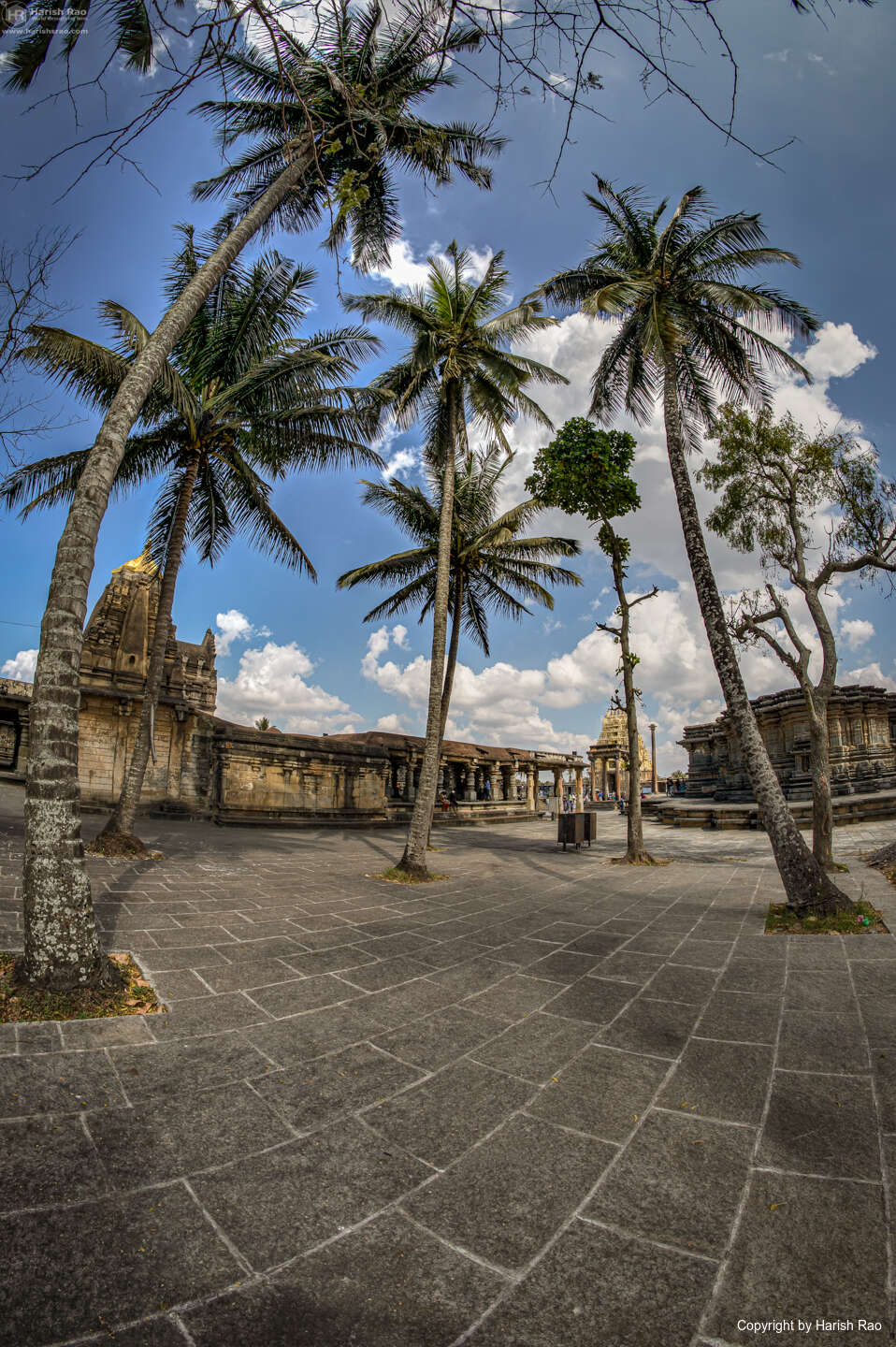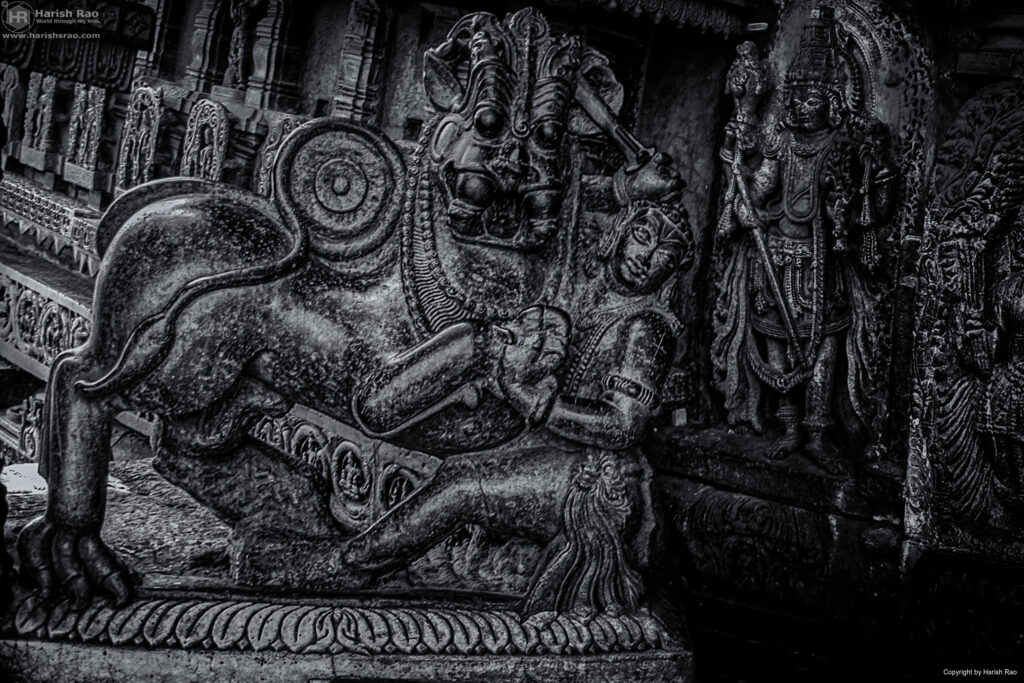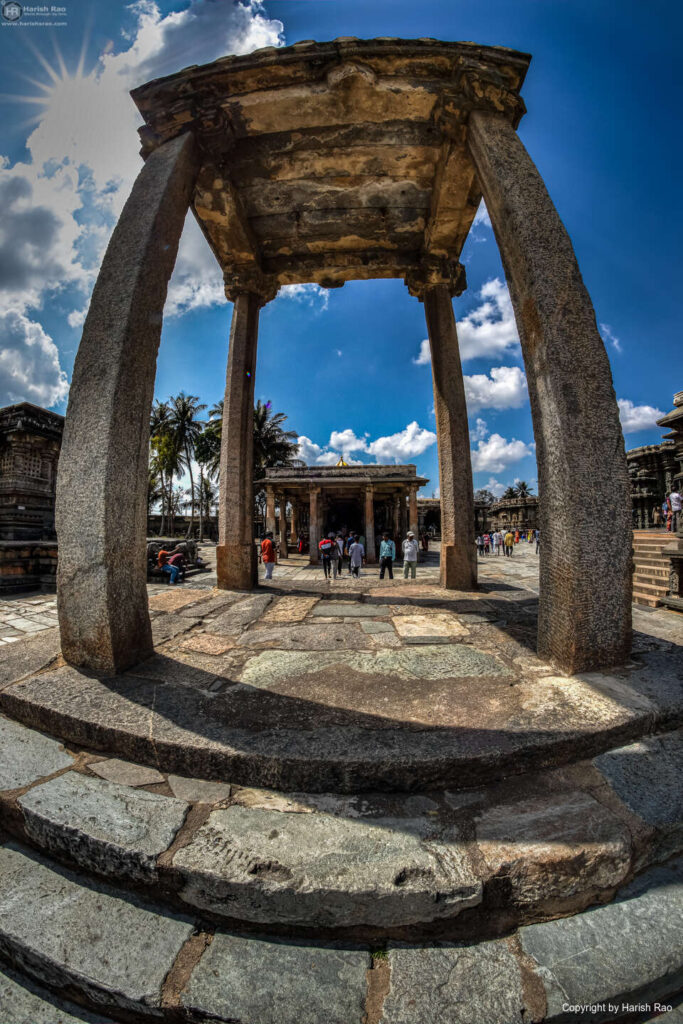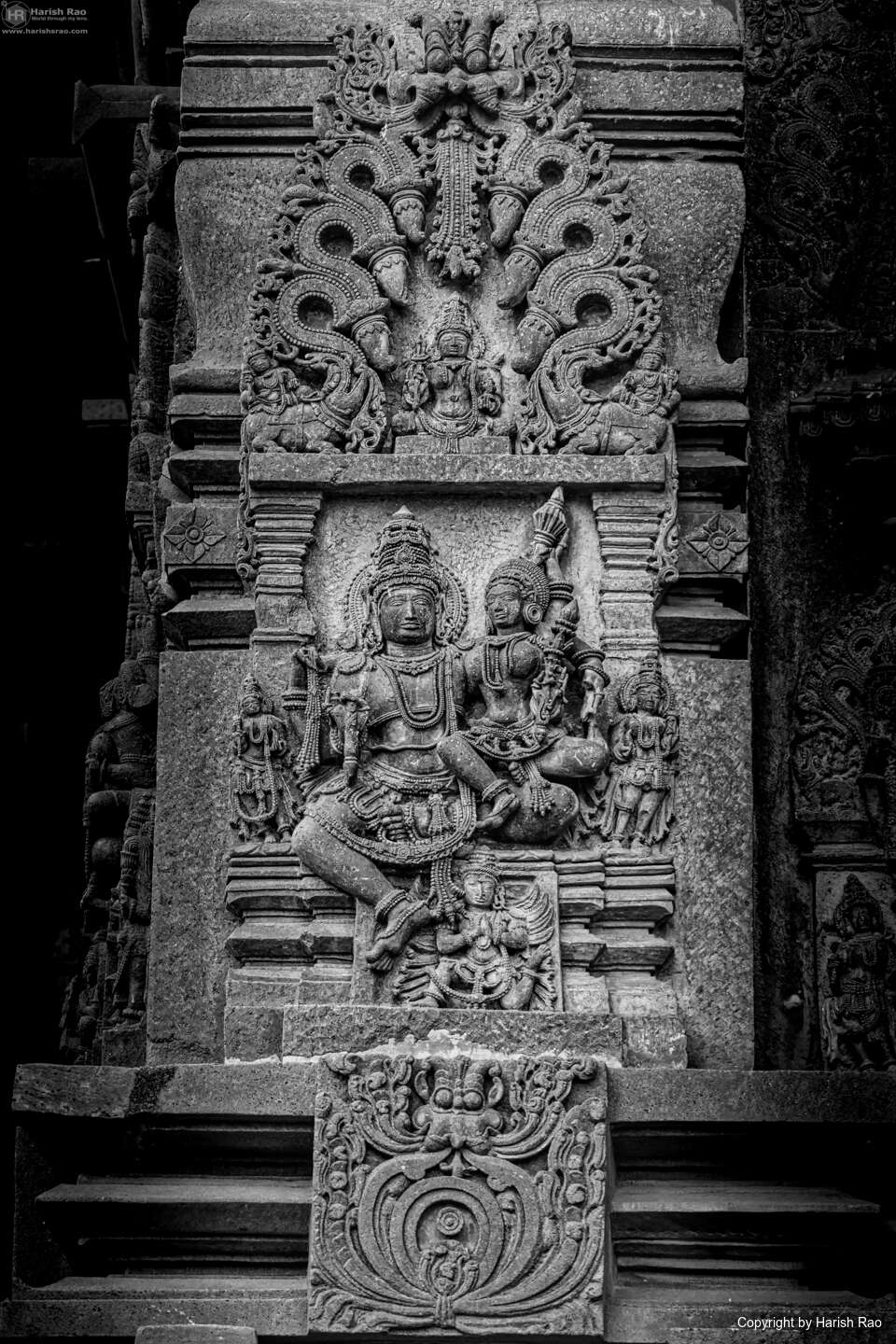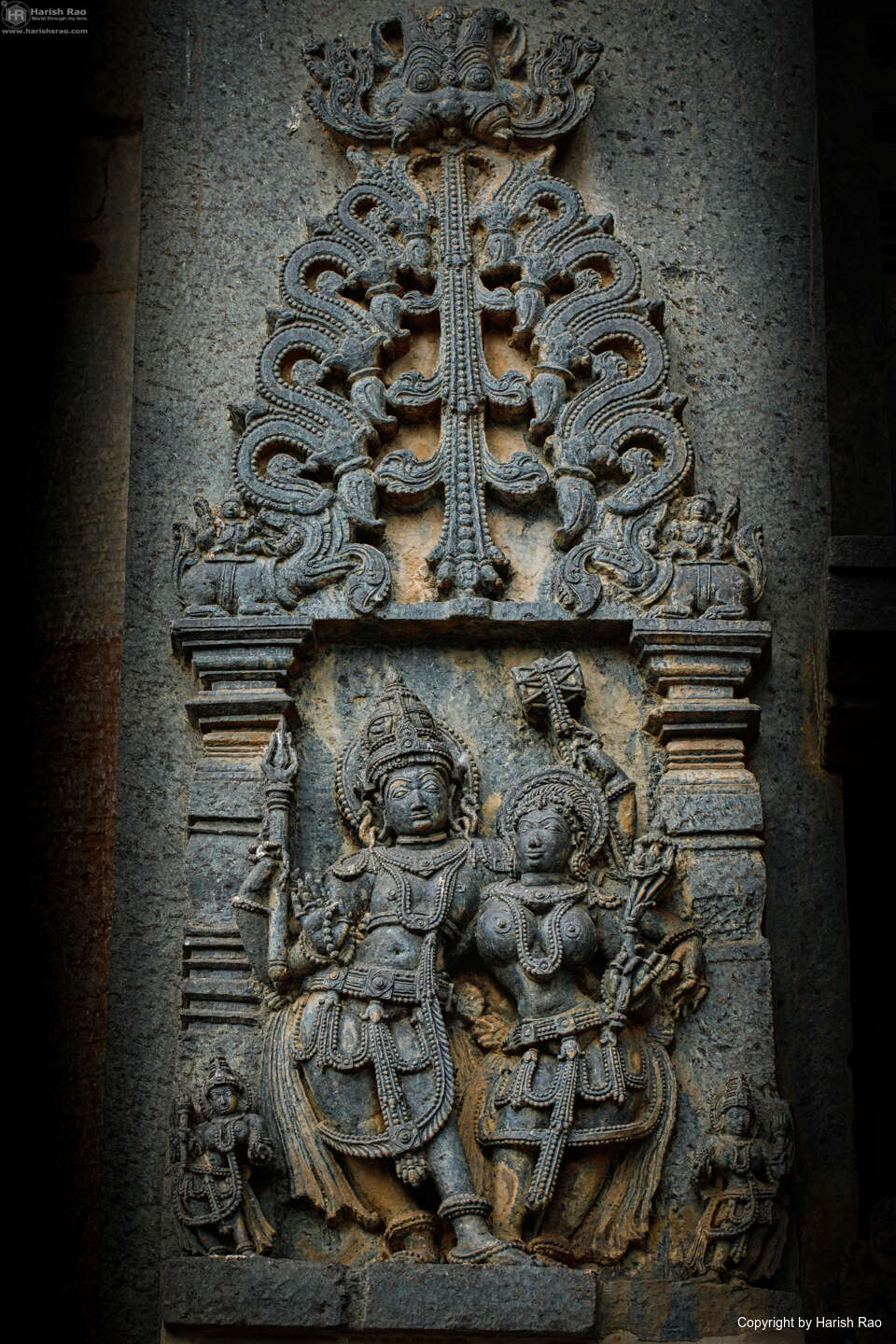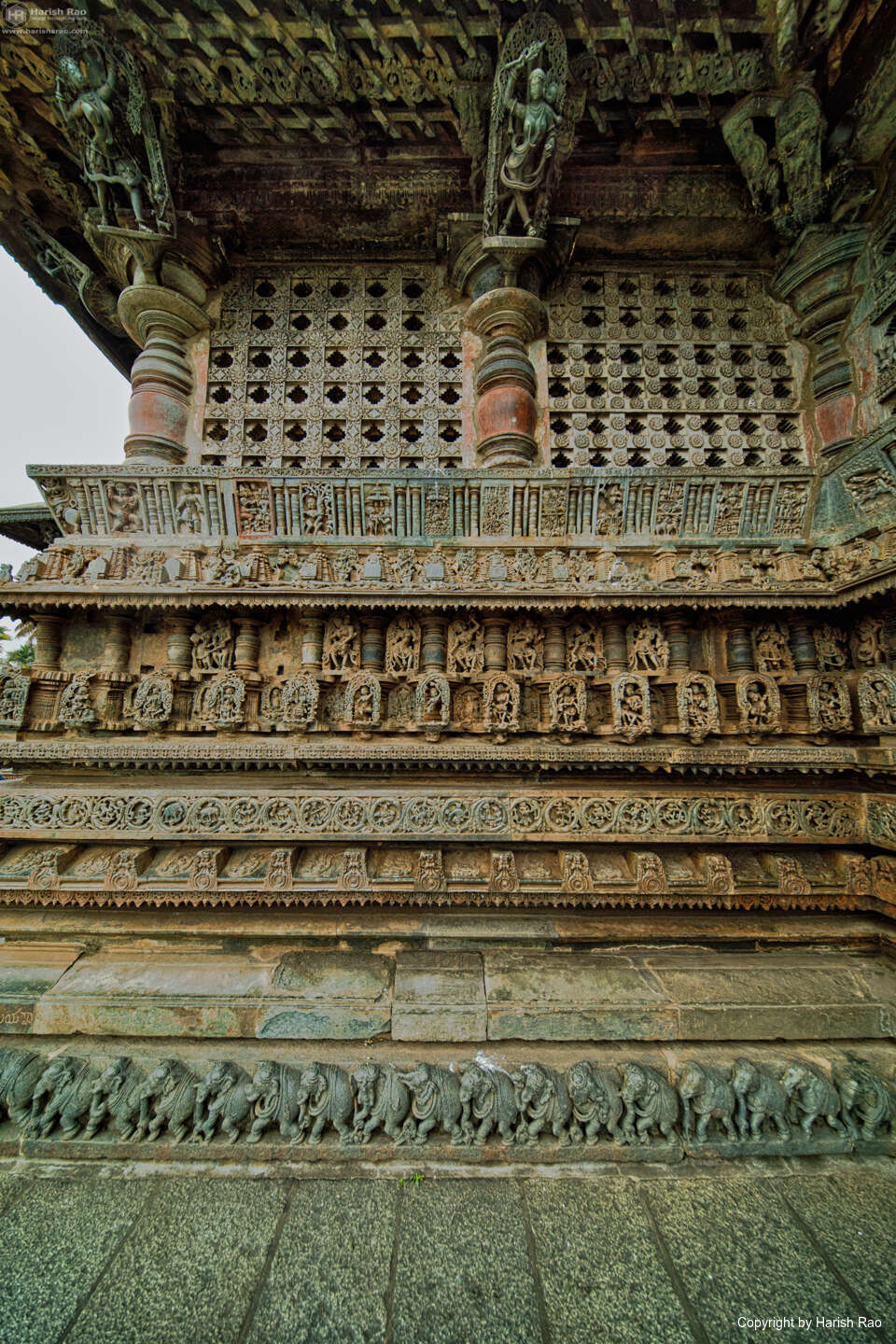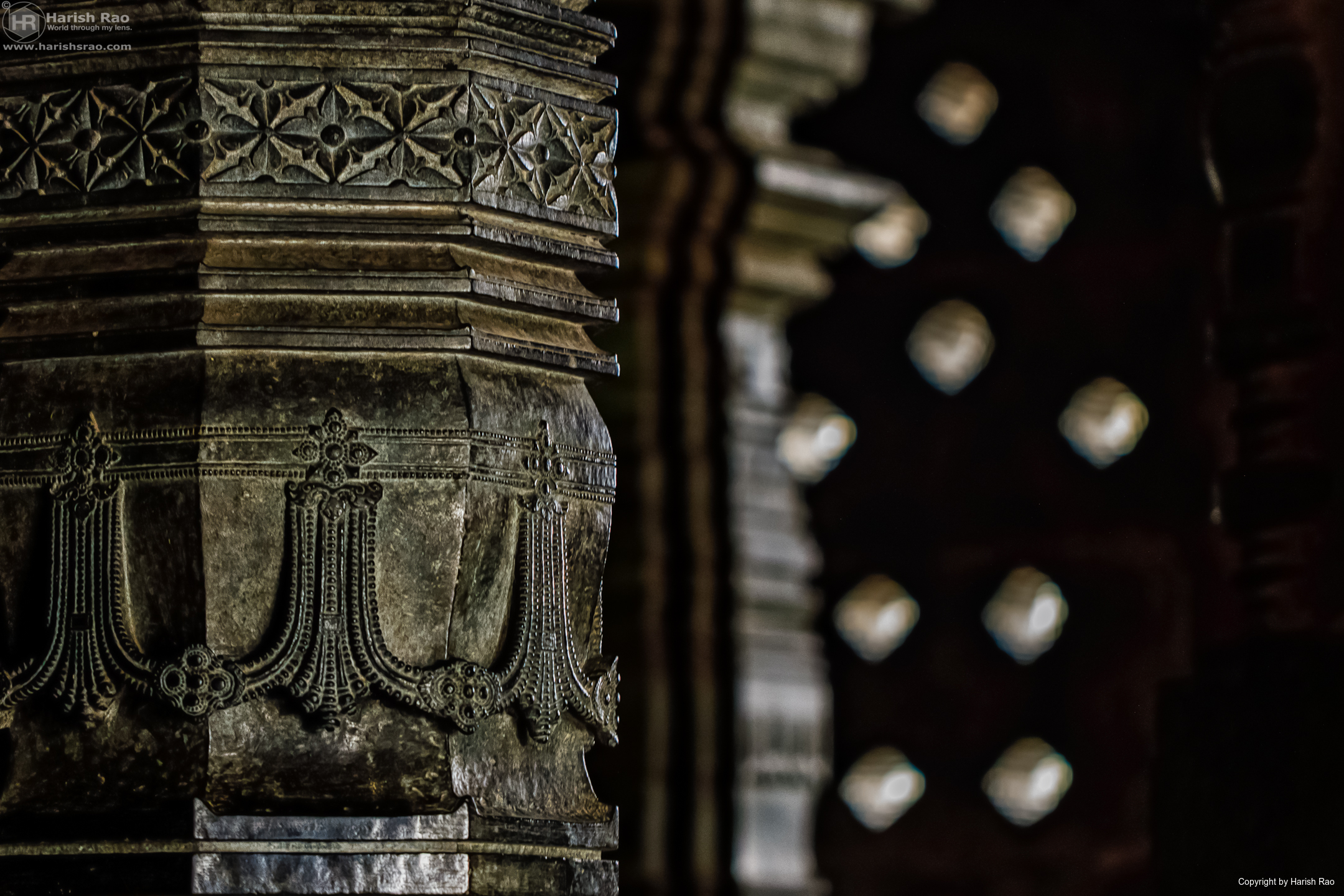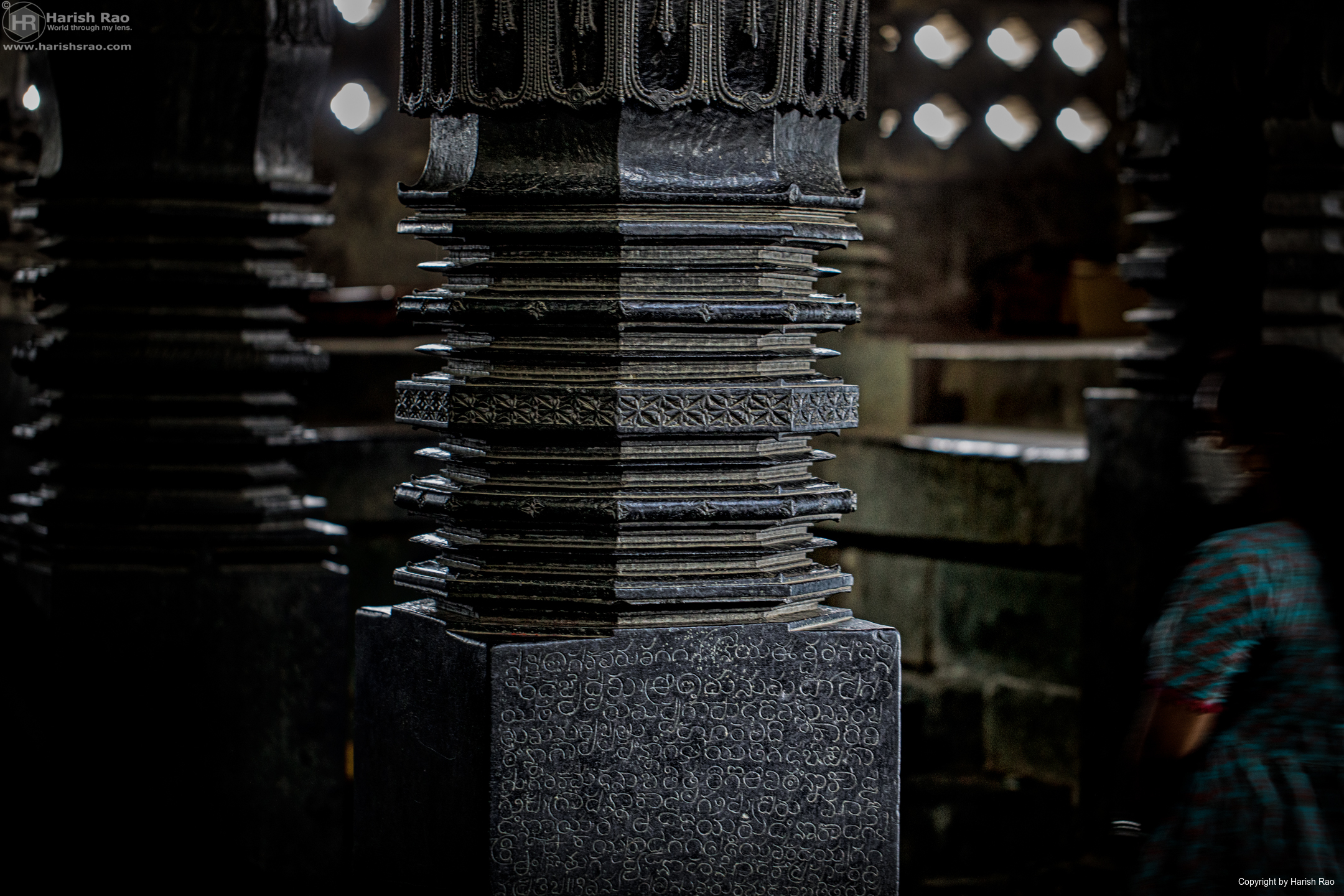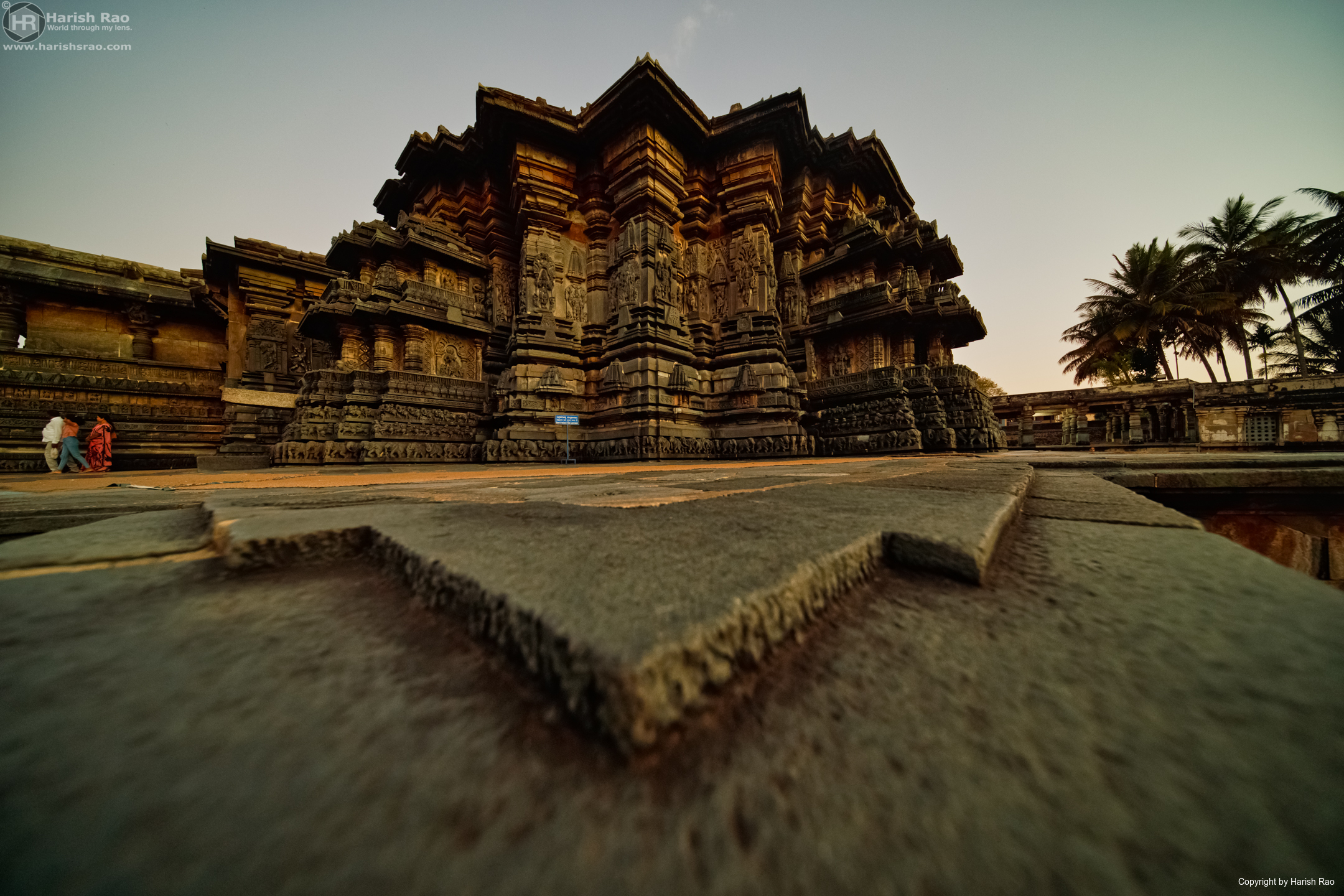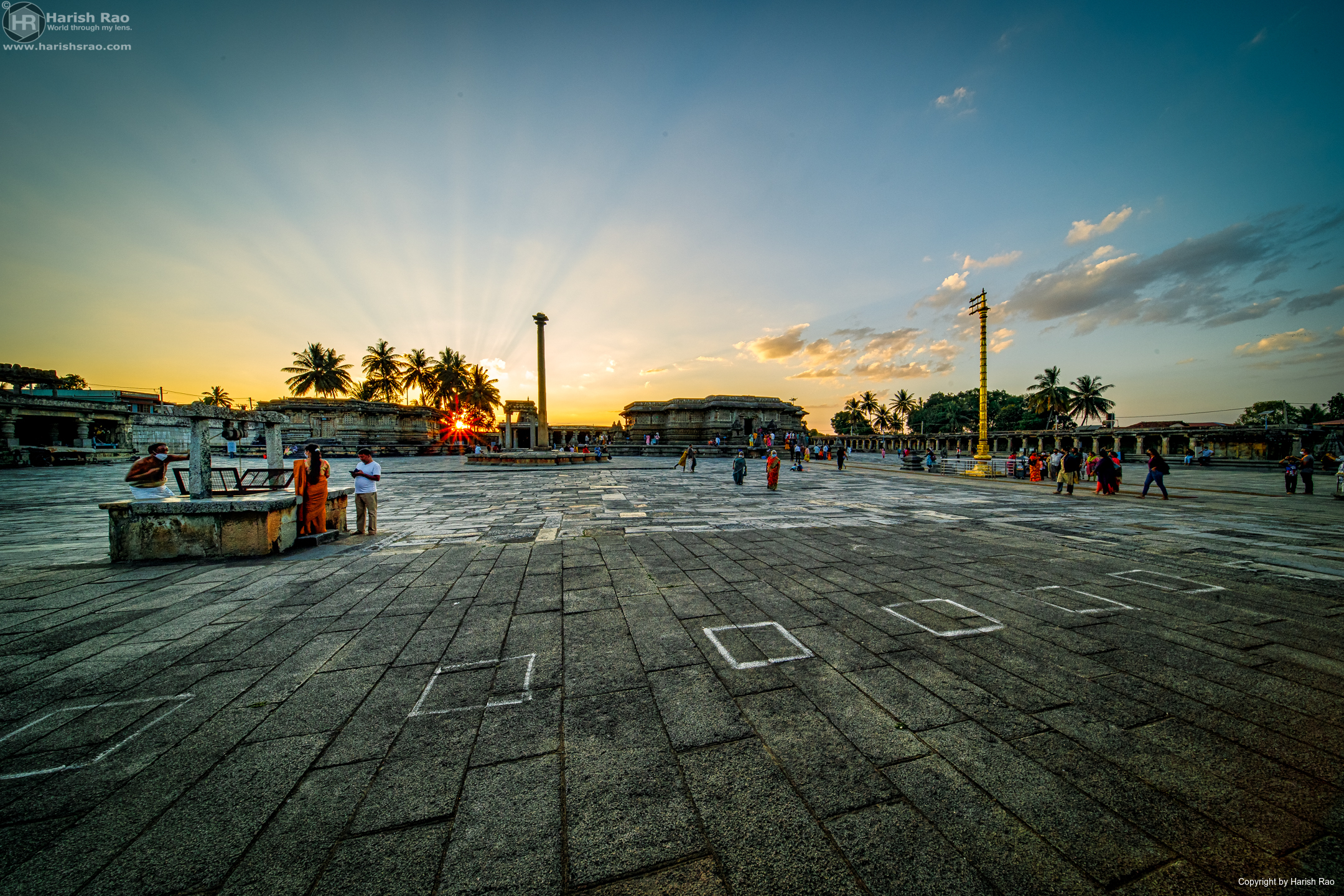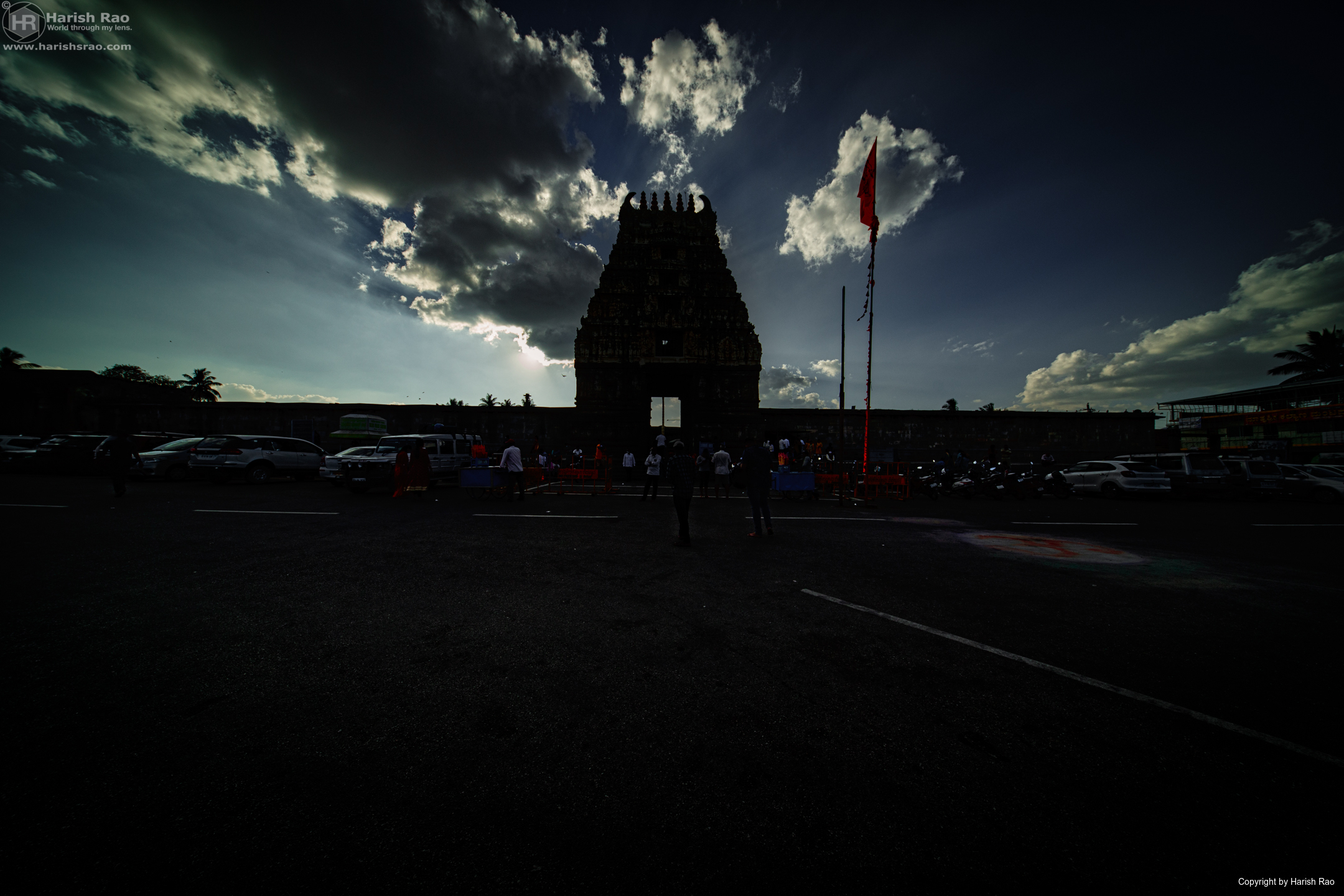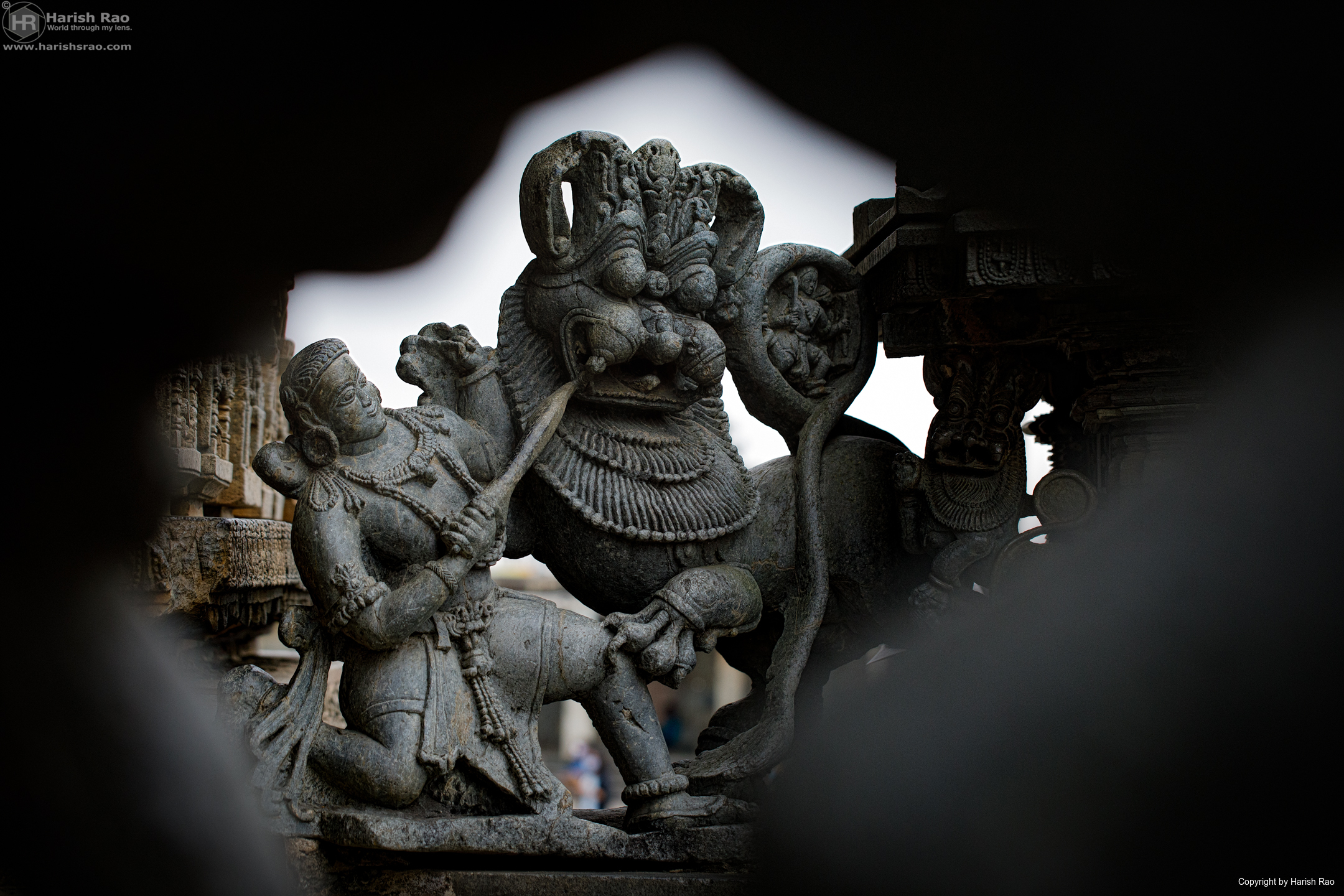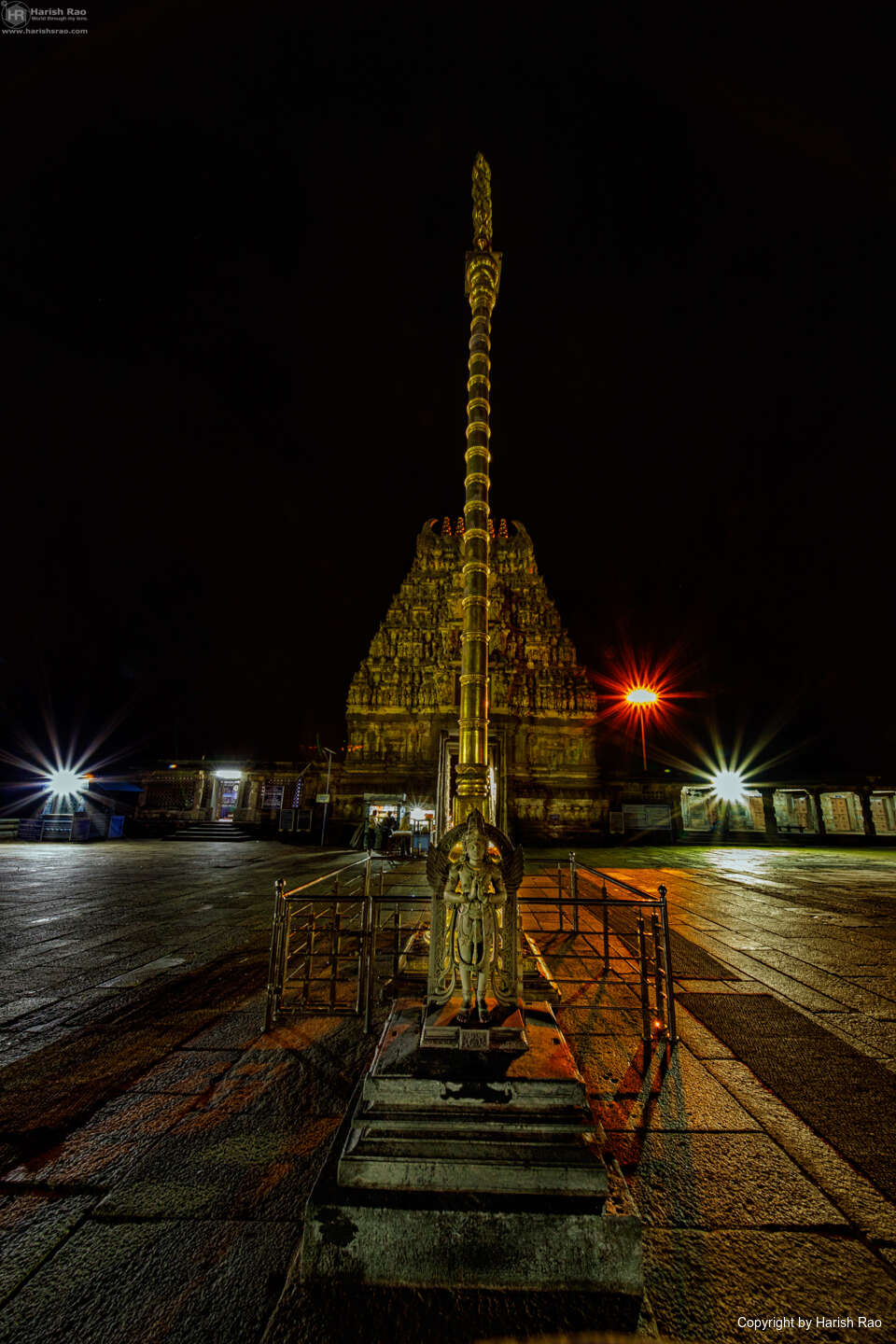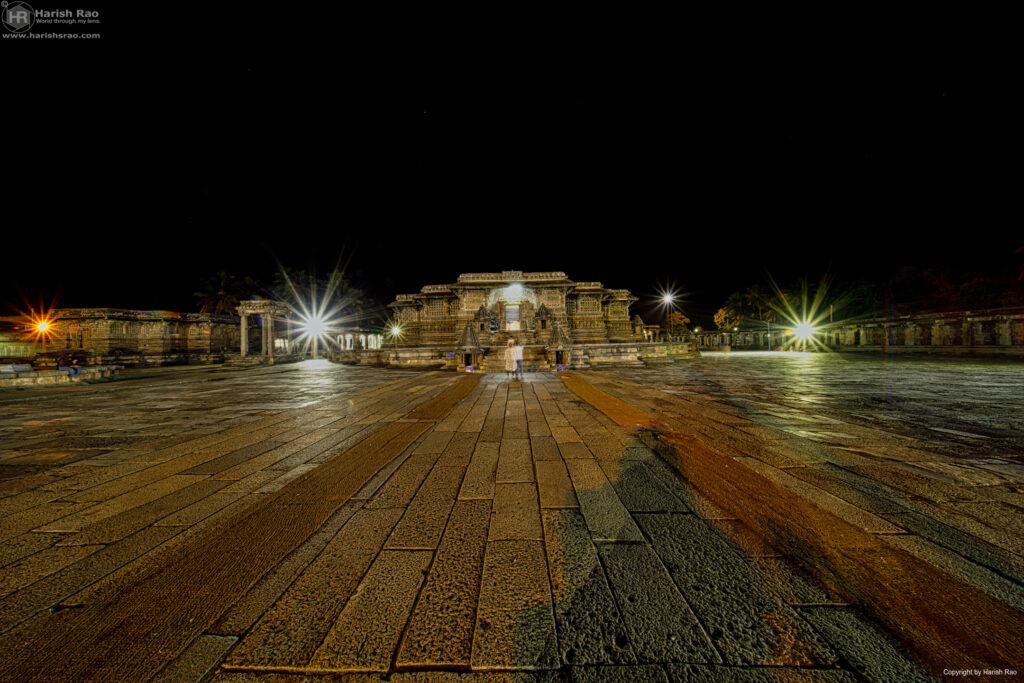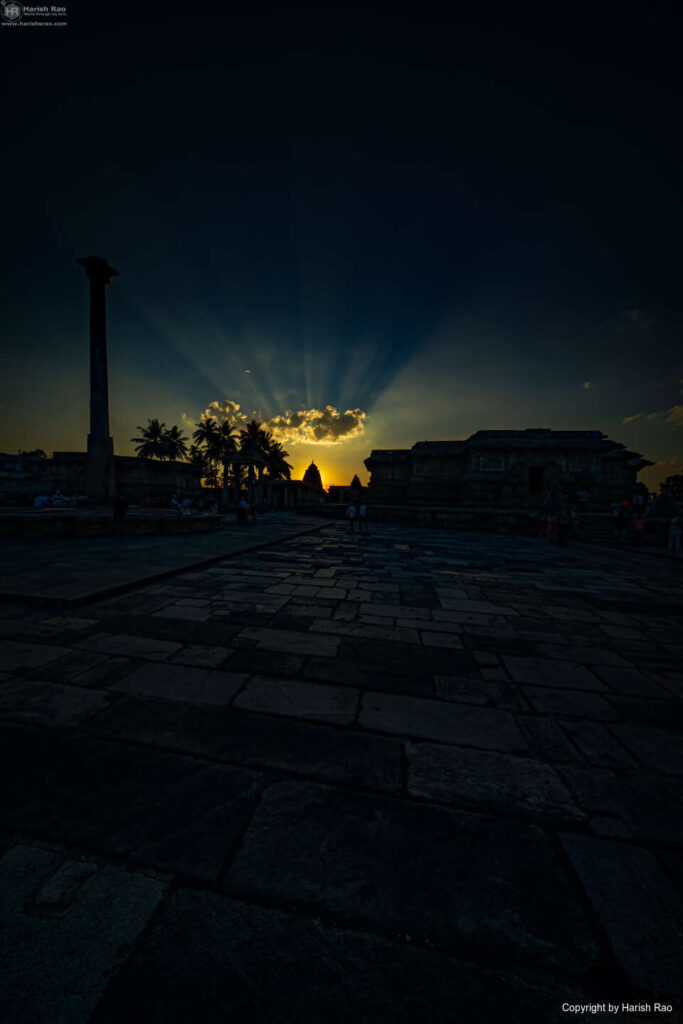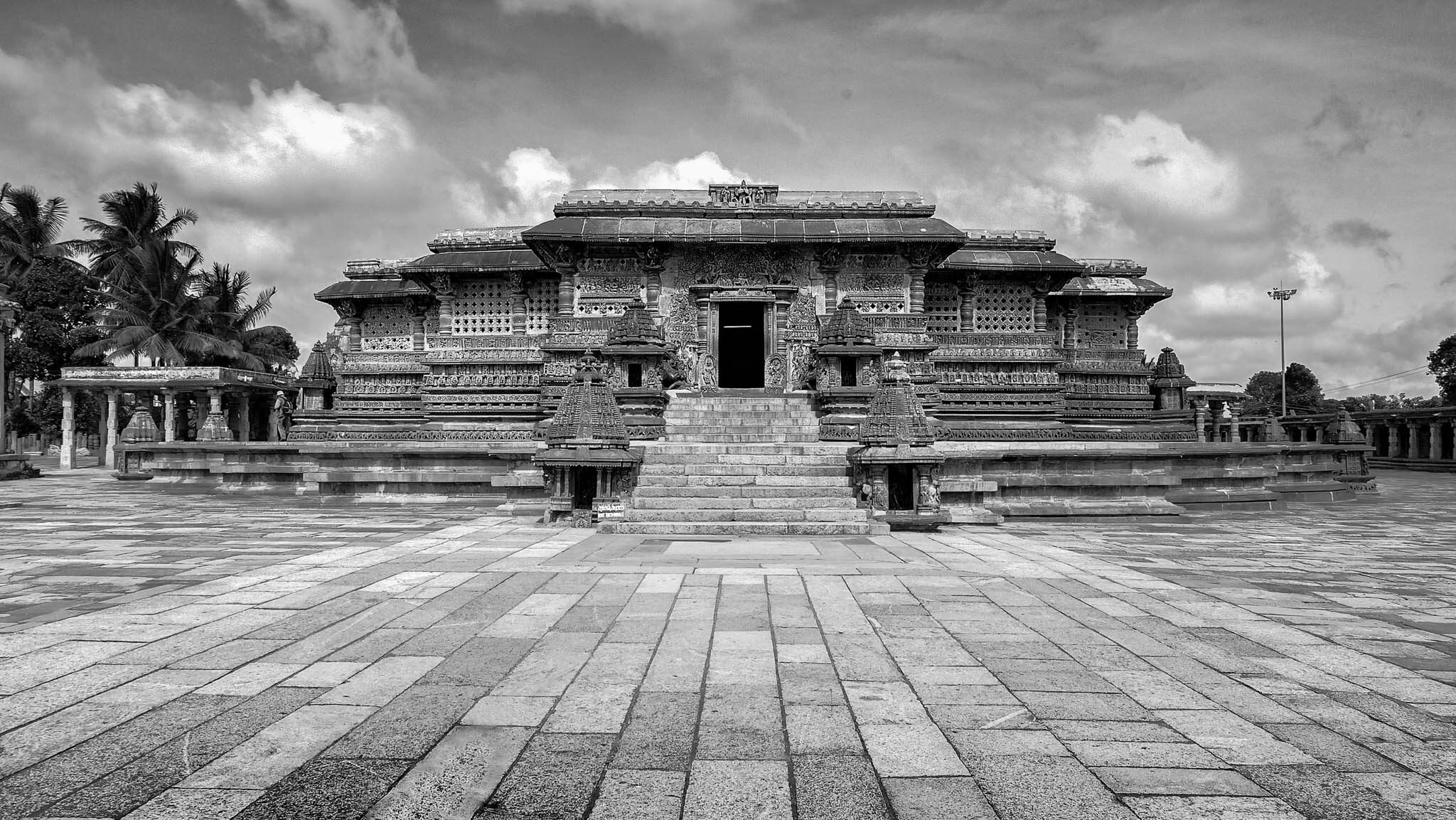
Sri Chennakeshava Temple
Belur
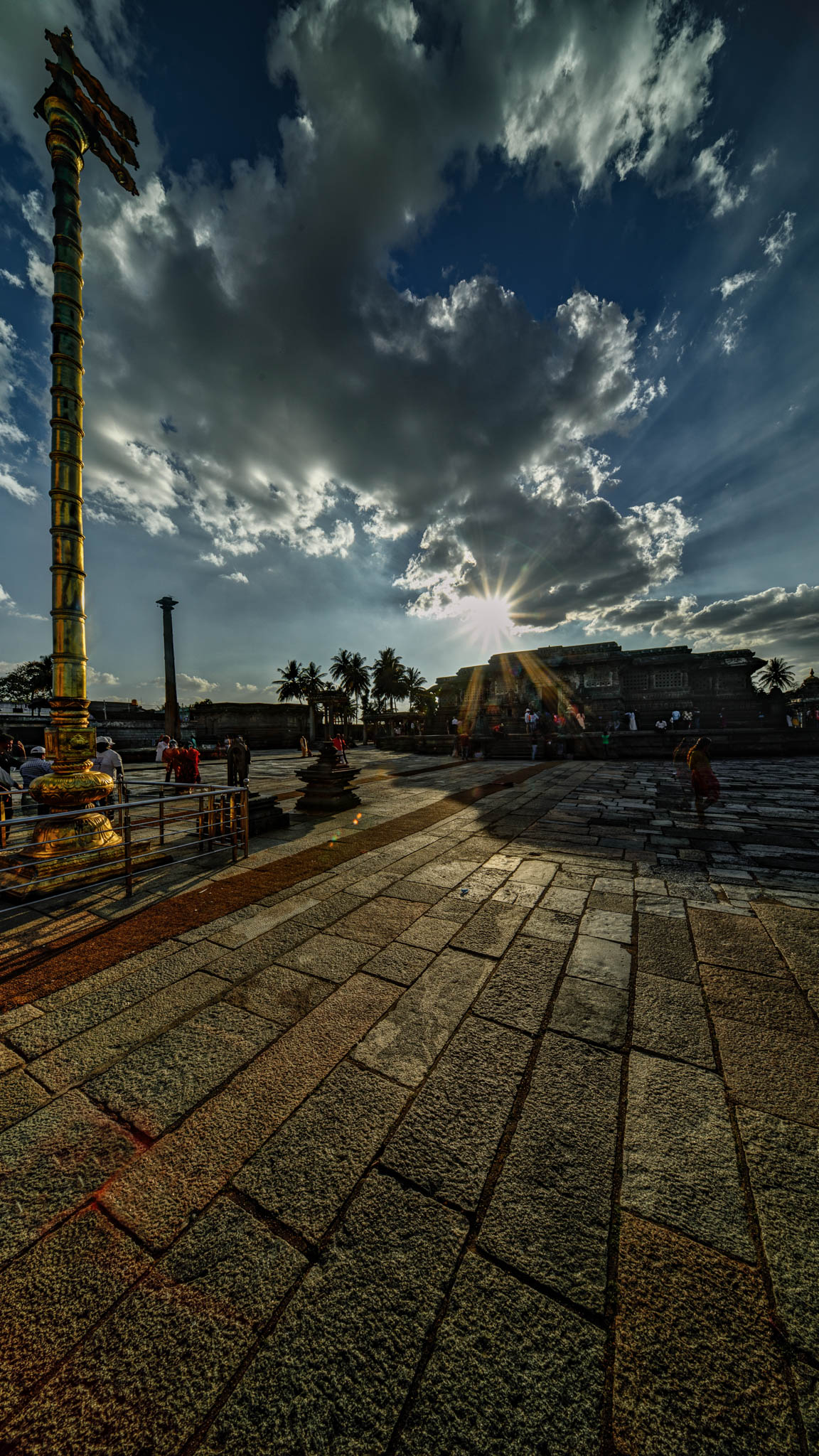
Sri Chennakeshava Temple
Belur
About Belur:
Recently I visited the Lord Chennakeshava Temple at Belur, a small town about 220kms from Bangalore. “Chenna” means beautiful and “Keshava” is a synonym for Lord Vishnu. Karnataka is known for the 100 odd temples built by the Hoysala dynasty who were connoisseurs of art and music. The Chennakeshava temple at Belur and Hoysaleshwara temple at Halebeedu are in my opinion the King and Queen of all the Hoysala temples while the Chennakeshava temple of Somnathpur is the Prince.
The Belur temple was built by King Vishnuvardhana who was originally a Jain but who was influenced by the famous Tamil teacher and scholar Acharya Ramanuja who was a proponent of Vaishnavism. It was due to Ramanuja’s influence that King Vishnuvardhana built Lord Vishnu temple to commemorate his victory over Cholas in the battle at Talakkad. He started the construction in 1117 and it was completed 103 years later by his grandson King Veera Ballala .
The king took the services of the none other than “Amarshilpi” Jakanachari who is considered as the brain behind the architecture of this temple. Once you see this temple you would be convinced that Shilpli Jakanachary was one of the finest Architectural brain that mankind has ever produced. The construction of the temple does not use cement or any such binding material . The entire temple is an assembly of blocks that have intricate carvings and these blocks are kept in place due to the perfect “Lego” like locks horizontally and vertically that holds them together.
One feels amazed at how the architects designed these blocks, carved them to perfection , marked them and planned the whole assembly with no power tools or design softwares or excel sheets but only with hand tools available 1000 years back. It took me several trips to capture the beauty of this temple and yet even after so many trips I always feel I missed to cover quite a few details which motivates me to go again and again to Belur.
Reaching Belur:
If you are in Bangalore, it is best to start at about 5:00am to beat the traffic and reach the temple early so that you can capture at least a few pictures when there are not many people obstructing the view.
To get to Belur, you take the Bangalore -Mangalore NH75 which is a 4 lane toll road. At about 85 kms from Bangalore on the driving side of the highway, you can stop for an excellent South Indian Vegetarian breakfast at the newly started Kiccha’s Halli Mane . This hotel, I am told, belongs to the Kannada cine star Kiccha Sudeep. Nevertheless the food is good, ambience is great . You can treat yourself to some of the regional delicacies like Neeru Dose, Halbai or the typical Idly, Vada and Masale Dose topped up by Mysore filter coffee. You have to get off NH75 to go into Hassan town and then take the state highway SH57 from Hassan to reach Belur. The 2 lane state highway from Hassan to Belur is in excellent condition with moderate traffic.
Belur in daylight:
You will be entering the temple from the East . Like all the major temples in South India the Belur temple also has a grand Gopura at the entrance. The Gopura was destroyed several times by the invaders from North and reconstructed by the kings. The temple is surrounded by perimeter wall and the Gopura is at the centre on the Eastern perimeter wall.
You can see the tall Garudastambha from the entrance. The Gopura stands on the granite wall on either side with the passageway to the temple in the centre.
In front of the Garudastambha is the beautiful statue of Garuda, also called Garudavahana which is the official carrier of Lord Vishnu. The Garuda faces the Lord and is standing with its hands hands folded as if indicating to Lord that it is ready for its service.
The Garudastambha is a 22 feet tall wooden post with a brass plate cladding. The stambha is used to hoist the flags during the various festivals.
I used the priest fetching the water from the well for morning Pooja in the temple, as the anchor in the foreground to make balance the composition.
On the right of the well, which is the East, is the Gopura. The Dhawja stambha and Garuda Vahana are in front of it. Directly opposite the Gopura on the left is the main temple. To the left of the main temple is the Lamp Pole , Swing Pavilion and then the Kappe Chennigaraya temple.
The main temple is in front of the Garudavahana. Most Hoysala temples are built on a 3 feet high platform called “Jagati” which not only provides a raised elevation but also serves as a Pradakshinapath or circumambulation path around the temple.
To the south of the Kesava temple is the Kappe Chennigaraya temple which houses two Lords, one dedicated to Venugopala and the other to Chennigaraya a synonym for Chennakeshava. The temple is called Kappe Chennigaraya because, according to the folklore a Kappe (frog) was once found near Lord’s navel. This smaller temple was built by the queen concurrently with the main temple, and is a scaled down version of the main temple.
The Jagati is of star shape which is an exact offset of outer temple wall and follows the same zigzag profile . The zigzag pattern construction is a Hoysala invention.
The Chennakeshava temple sanctum has three entrances. Typically the visitors enter from the front entrance on the East and exit from the either of the entrances on North or South. While all the three entrances are extremely ornate, the one on the East has extensive carvings and very interesting by stories attached to it.
The Mahadwara or Main entrance on east.
The main entrance has two statues on either side that shows a youth named Sala attacking a Lion . These statues are the official Hoysala emblem. The story goes that this youth named Sala, was a student who fought the Lion when it tried to attack his teacher. When all students were running here and there scared of Lion, Sala attacked the Lion without any weapon. The teacher then threw a weapon at him and said ’Hoy Sala’ meaning ‘Kill the Lion Sala’ . Sala fought the Lion single handedly and killed it. This act of bravery was adopted as the emblem of the Hoysala Empire.
Three mini temples called Devakoshta are found on all the sides excepts East. They are scaled down models of temples that has carvings from top to bottom and has all the elements of main temple like the pillars , the sanctum, mini idol of the deity and a Shikhara on the top of the shrine.
The first layer has approximately 644 elephants. No two elephant carvings resemble. The elephant layer represents strength. The second layer has carvings of Lions that represents courage while the third layer has soldiers on horses that represents speed
The central dome 10 feet in diameter and 6 feet deep is an assembly of 52 individually carved blocks that have been locked together and held in place by a key in the centre. The central key has a the carving of Narasimha at the bottom. It is height of engineering excellence and sculpting talent of these artists who not only sculpted the individual blocks exquisitely conveying a mythological story but also worked out geometrically perfect interlocking blocks that constituted a dome.
The other very interesting structure in the temple complex is the Deepa Stambha or the lamp pole. This a 42 feet tapered pole made out of a monolithic rock . The pole has a provision to hold the lamp at the top . The interesting part is that the base of the lamp rests only on three sides while the fourth is freely suspended in air. One can pass a sheet of paper on the freely suspended side to check the crevice.
The sculptures that are most artistic and enriched with details are undoubtedly the 38 bracketed figures of beautifully dressed maidens that are called Shilabalikes or the Madanikas. These sculptures are bracketed between the ceiling and the wall at an angle so that they are easily viewable by the visitors standing below. There were 42 of them but 4 of them were totally damaged by the invaders.
The two of the most famous amongst them are the statues of Darpana Sundari and The Mohini.
Darpana Sundari or the Mirror Beauty statue shows a young lady looking at herself in a hand mirror standing in front of an intricately carved bower . The jewellery, the details on the hair , the flowing attire are all exquisite. The sculptor has even carved out a round handle for the stone mirror that is so delicate that the gaps to insert the fingers can be seen. The mirror on the statue is so positioned that at sunrise the reflections from the shiny mirror lights up the maidens face.
The second statue is that of Mohini who has held her hand on head. It is said that if you pour water on the fingers on top her head, it falls on her nose , middle of her forehead, tip of her nose, the tip of her left breast, tip of her right hand fingers and then on to the tip of her left toe. The are all in a straight line.
Wow !
After spending a full day capturing the beauty of this temple I ended up in front of the Saumyanayaki temple . The temple that is seen through the swing pavilion has been constructed by reusing the materials salvaged from the ruins of the other Hoysala temples.
The trip ended at the coconut orchard at the South-West corner of the temple complex. The looping coconut trip with the temple complex in the backdrop provided a good composition.
I was completely exhausted after spending about 6 hours in the temple complex. I had a 250kms drive back home ahead of me. But I was glad that I could capture this beautiful piece of Hoysala architecture in my camera though I was very sure that I could not capture all the details. It is so easy to miss the details here because every single stone that has been put here over a period of 103 years of construction is full of exquisite details and very interesting stories behind it . So I knew that I would have to come here several times and keep adding the pictures and story behind them to this page.
Belur at sunset and after dark:
So finally again after 2 years of Corona break, I got a chance to travel to Belur. This time I wanted to try and take some pictures of the temple at sunset and after dark. Here are some of the pictures.
While waiting for the sunset I took a few pictures of the pillars inside the main sanctum and the beautiful perforations on the sanctum walls and some exquisite carvings on the outer wall.
So finally again after 2 years of Corona break, I got a chance to travel to Belur. This time I wanted to try and take some pictures of the temple at sunset and after dark. Here are some of the pictures.
While waiting for the sunset I took a few pictures of the pillars inside the main sanctum and the beautiful perforations on the sanctum walls and some exquisite carvings on the outer wall.
The outer wall features 80 large reliefs around the temple out of which there are several idols of Shiva in various moods with and without Parvati.
The Navaranga hall has forty eight pillars. All except the central four are carved in a unique way. The central four are later additions, added in 1381 CE during the Vijayanagara Empire era, to support the internal structure the damaged temple. The pillars are of three sizes. Two pillars are particularly notable. One is the so-called Narasimha pillar which is carved with miniature figures from top to bottom. The local legend states that this pillar once could rotate because of how it was supported, but it no longer can be rotated. The other pillar is the Mohini pillar. The four central pillars are notable for having been hand carved while the others were lathe turned. Initially the internal hall was open on all three sides except West. Later the stone walls were added which made the interior quite dark. However the artisans have made beautiful perforations in the stone wall which lets in light and keeps the hall ventilated .
The Navaranga hall has forty eight pillars. All except the central four are carved in a unique way. The central four are later additions, added in 1381 CE during the Vijayanagara Empire era, to support the internal structure the damaged temple. The pillars are of three sizes. Two pillars are particularly notable. One is the so-called Narasimha pillar which is carved with miniature figures from top to bottom. The local legend states that this pillar once could rotate because of how it was supported, but it no longer can be rotated. The other pillar is the Mohini pillar. The four central pillars are notable for having been hand carved while the others were lathe turned. Initially the internal hall was open on all three sides except West. Later the stone walls were added which made the interior quite dark. However the artisans have made beautiful perforations in the stone wall which lets in light and keeps the hall ventilated .
The setting sun provides a complete different perspective to Belur . It casts a golden colour on the outer wall that enhances its beauty further. The picture on the right provided an interesting situation where the priest was collecting water from the well for the evening pooja. The sunburst , with priest gathering water, the two stambhas and the view of the temple in background provided an interesting composition.
Belur is a short drive away from the Chickmagalur which is full of coffee estates , forests and hills. It falls in the vicinity of the western ghats. Due to this vicinity, many times we can see very interesting cloud formations appear out of nowhere. One such formation took place that day when we stepped out for a coffee break in the evening . I noticed that the setting sun behind the clouds , the temple silhouette and the red flag was fascinating. The camera provides a nice silhouette as it darkens the subject when you are shooting against the light.
This is a short time lapse video of the cloud movement of the cloud over the great temple. If you want really want to study the temple without disturbance it is advisable to visit the temple during the weekdays. Avoid weekends and other holidays.
In this picture all the key elements that define Belur like the Gopura, the Garuda Stambha, the Deepastambha and the temple all under sunlight made it an interesting composition.
I captured this picture since thought the view of the Garudastambha framed within the well made it interesting
Finally it was time to call it a day … we had started early in the morning and driven all the way from Bangalore to Halebeedu, photographed that temple first till the light permitted us to do and then came back to Belur in the evening to shoot the temple in the blue hour . We decided to spend time in the Belur temple till the security forced us out. However it paid off as we were presented with this opportunity to shoot the temple in the Sodium light. Maintaining small apertures and high ISO we shot these pictures taking support of whatever was available (as tripod is not allowed in the premises) . We could capture these composition with the starburst around the lights.
The Hoysala temples are so rich with various forms of art that everytime you visit them they present different perspectives … you can photograph the grandeur under different lighting conditions using different perspective and every time when you return back from temple you feel that next time you could still do something different.
So stay safe until next time!
Cheers,


